Cantore Arithmetic is able to defy word spirit: Stacks: Easter Island! The book on the Greek in statue as Easter Island has appearance of a nut from machinery. Greeks’ have defied information as the stacked at the structure to the paintings of the works’ as noted in museums’ Worldwide.
This treasure trove as a forest dips’ into the wealth as a pixel as the graph goes to the material and that frame of constructed to institute the sands to the rocks of mineral as that chart. The word spirit would bring to terms pi as 3.141 in extensions’ as Lombard is a street in San Francisco! Word IT has been generously used for the internet delivering the building of the golden gate: Tale gait: Dock!!
The timeline that is brought to the series on The History Channel referred to a Time travel is the stacks as pi in less than six subcutaneous layers of skin would be the brain: Itch. The organ rib at medical intervention has been reported and the envelope of that circulation is of importance as breadth! Statements as word it is all about the blood retains the value to and throughout the Web now. Word ancient works to material. Word things went to word an and that worth delivered book at revelation: Scope. Mouth wash: Evel Knievel, Robert Craig Knievel (October 17, 1938 – November 30, 2007), known professionally as Evel Knievel (/ˈiːvəl kəˈniːvəl/), was an American stunt performer and entertainer.
Horses rear as motorcycles are able to be understood at the works selected as The Family of Evel Knievel named their actions: Stunts’. The performance for Cantore Arithmetic goes to the Grand Canyon and that process of information had been retained as at 815 Balboa E.K.P. Jr. delivered: Efficiency’. The statistic to stat is paramount.
The family of equated shield!!
Addendum: Football: Interference: Penalized: Subscription
Addendum1: Teddy: Theodore Roosevelt!!
Addendum2: Paraphrased: Word note at Please an excerpt
Addendum3: Christian texts equated pounding sand
Excerpt paraphrased(Point selection(E.K.P.)): When the thousand years are over, Satan will be released from his prison and will go out to deceive the nations in the four corners of the Earth—Gog and Magog—and to gather them for battle. In number they are like the sand on the seashore.
Excerpt Paraphrase(The Green Apple(results)): They have quotations.
Matthew 15:11
“Not that which goeth into the mouth defileth a man; but that which cometh out of the mouth, this defileth a man.”
King James Version (KJV)
Isaiah 1:16
“Wash you, make you clean; put away the evil of your doings from before mine eyes; cease to do evil;”
King James Version (KJV)
You searched for
"SHIELD" in the KJV Bible
44 Instances - Page 1 of 2 - Sort by Book Order - Feedback
- 2 Samuel 1:21chapter context similar meaning copy save
- Ye mountains of Gilboa, let there be no dew, neither let there be rain, upon you, nor fields of offerings: for there the shield of the mighty is vilely cast away, the shield of Saul, as though he had not been anointed with oil.
- Psalms 119:114chapter context similar meaning copy save
- Thou art my hiding place and my shield: I hope in thy word.
- Psalms 84:9chapter context similar meaning copy save
- Behold, O God our shield, and look upon the face of thine anointed.
- Psalms 3:3chapter context similar meaning copy save
- But thou, O LORD, art a shield for me; my glory, and the lifter up of mine head.
- Proverbs 30:5chapter context similar meaning copy save
- Every word of God is pure: he is a shield unto them that put their trust in him.
- Jeremiah 46:3chapter context similar meaning copy save
- Order ye the buckler and shield, and draw near to battle.
- Psalms 115:10chapter context similar meaning copy save
- O house of Aaron, trust in the LORD: he is their help and their shield.
- Psalms 115:9chapter context similar meaning copy save
- O Israel, trust thou in the LORD: he is their help and their shield.
- Psalms 35:2chapter context similar meaning copy save
- Take hold of shield and buckler, and stand up for mine help.
- 2 Samuel 22:36chapter context similar meaning copy save
- Thou hast also given me the shield of thy salvation: and thy gentleness hath made me great.
- Psalms 33:20chapter context similar meaning copy save
- Our soul waiteth for the LORD: he is our help and our shield.
- Job 39:23chapter context similar meaning copy save
- The quiver rattleth against him, the glittering spear and the shield.
- Isaiah 21:5chapter context similar meaning copy save
- Prepare the table, watch in the watchtower, eat, drink: arise, ye princes, and anoint the shield.
- Judges 5:8chapter context similar meaning copy save
- They chose new gods; then was war in the gates: was there a shield or spear seen among forty thousand in Israel?
- Psalms 144:2chapter context similar meaning copy save
- My goodness, and my fortress; my high tower, and my deliverer; my shield, and he in whom I trust; who subdueth my people under me.
- Psalms 59:11chapter context similar meaning copy save
- Slay them not, lest my people forget: scatter them by thy power; and bring them down, O Lord our shield.
- 1 Chronicles 12:24chapter context similar meaning copy save
- The children of Judah that bare shield and spear were six thousand and eight hundred, ready armed to the war.
- 2 Samuel 22:3chapter context similar meaning copy save
- The God of my rock; in him will I trust: he is my shield, and the horn of my salvation, my high tower, and my refuge, my saviour; thou savest me from violence.
- Isaiah 22:6chapter context similar meaning copy save
- And Elam bare the quiver with chariots of men and horsemen, and Kir uncovered the shield.
- Ephesians 6:16chapter context similar meaning copy save
- Above all, taking the shield of faith, wherewith ye shall be able to quench all the fiery darts of the wicked.
- 2 Chronicles 17:17chapter context similar meaning copy save
- And of Benjamin; Eliada a mighty man of valour, and with him armed men with bow and shield two hundred thousand.
- Psalms 5:12chapter context similar meaning copy save
- For thou, LORD, wilt bless the righteous; with favour wilt thou compass him as with a shield.
- 1 Samuel 17:41chapter context similar meaning copy save
- And the Philistine came on and drew near unto David; and the man that bare the shield went before him.
- Genesis 15:1chapter context similar meaning copy save
- After these things the word of the LORD came unto Abram in a vision, saying, Fear not, Abram: I am thy shield, and thy exceeding great reward.
- Ezekiel 38:5chapter context similar meaning copy save
- Persia, Ethiopia, and Libya with them; all of them with shield and helmet:
- Psalms 115:11chapter context similar meaning copy save
- Ye that fear the LORD, trust in the LORD: he is their help and their shield.
- Psalms 91:4chapter context similar meaning copy save
- He shall cover thee with his feathers, and under his wings shalt thou trust: his truth shall be thy shield and buckler.
- Psalms 28:7chapter context similar meaning copy save
- The LORD is my strength and my shield; my heart trusted in him, and I am helped: therefore my heart greatly rejoiceth; and with my song will I praise him.
- Psalms 18:35chapter context similar meaning copy save
- Thou hast also given me the shield of thy salvation: and thy right hand hath holden me up, and thy gentleness hath made me great.
- Psalms 76:3chapter context similar meaning copy save
- There brake he the arrows of the bow, the shield, and the sword, and the battle. Selah.
This is page: 1 of 2
1 2 Next >
Efficiency (statistics)
In statistics, efficiency is a measure of quality of an estimator, of an experimental design,[1] or of a hypothesis testing procedure.[2] Essentially, a more efficient estimator needs fewer input data or observations than a less efficient one to achieve the Cramér–Rao bound. An efficient estimator is characterized by having the smallest possible variance, indicating that there is a small deviance between the estimated value and the "true" value in the L2 norm sense. [1]
The relative efficiency of two procedures is the ratio of their efficiencies, although often this concept is used where the comparison is made between a given procedure and a notional "best possible" procedure. The efficiencies and the relative efficiency of two procedures theoretically depend on the sample size available for the given procedure, but it is often possible to use the asymptotic relative efficiency (defined as the limit of the relative efficiencies as the sample size grows) as the principal comparison measure.
Estimators[edit]
The efficiency of an unbiased estimator, T, of a parameter θ is defined as [3]
where is the Fisher information of the sample. Thus e(T) is the minimum possible variance for an unbiased estimator divided by its actual variance. The Cramér–Rao bound can be used to prove that e(T) ≤ 1.
Efficient estimators[edit]
An efficient estimator is an estimator that estimates the quantity of interest in some “best possible” manner. The notion of “best possible” relies upon the choice of a particular loss function — the function which quantifies the relative degree of undesirability of estimation errors of different magnitudes. The most common choice of the loss function is quadratic, resulting in the mean squared error criterion of optimality.[4]
In general, the spread of an estimator around the parameter θ is a measure of estimator efficiency and performance. This performance can be calculated by finding the mean squared error. More formally, let T be an estimator for the parameter θ. The mean squared error of T is the value , which can be decomposed as a sum of its variance and bias:
An estimator T1 performs better than an estimator T2 if .[5] For a more specific case, if T1 and T2 are two unbiased estimators for the same parameter θ, then the variance can be compared to determine performance. In this case, T2 is more efficient than T1 if the variance of T2 is smaller than the variance of T1, i.e. for all values of θ. This relationship can be determined by simplifying the more general case above for mean squared error; since the expected value of an unbiased estimator is equal to the parameter value, . Therefore, for an unbiased estimator, , as the term drops out for being equal to 0.[5]
If an unbiased estimator of a parameter θ attains for all values of the parameter, then the estimator is called efficient.[3]
Equivalently, the estimator achieves equality in the Cramér–Rao inequality for all θ. The Cramér–Rao lower bound is a lower bound of the variance of an unbiased estimator, representing the "best" an unbiased estimator can be.
An efficient estimator is also the minimum variance unbiased estimator (MVUE). This is because an efficient estimator maintains equality on the Cramér–Rao inequality for all parameter values, which means it attains the minimum variance for all parameters (the definition of the MVUE). The MVUE estimator, even if it exists, is not necessarily efficient, because "minimum" does not mean equality holds on the Cramér–Rao inequality.
Thus an efficient estimator need not exist, but if it does, it is the MVUE.
Finite-sample efficiency[edit]
Suppose { Pθ | θ ∈ Θ } is a parametric model and X = (X1, …, Xn) are the data sampled from this model. Let T = T(X) be an estimator for the parameter θ. If this estimator is unbiased (that is, E[ T ] = θ), then the Cramér–Rao inequality states the variance of this estimator is bounded from below:
where is the Fisher information matrix of the model at point θ. Generally, the variance measures the degree of dispersion of a random variable around its mean. Thus estimators with small variances are more concentrated, they estimate the parameters more precisely. We say that the estimator is a finite-sample efficient estimator (in the class of unbiased estimators) if it reaches the lower bound in the Cramér–Rao inequality above, for all θ ∈ Θ. Efficient estimators are always minimum variance unbiased estimators. However the converse is false: There exist point-estimation problems for which the minimum-variance mean-unbiased estimator is inefficient.[6]
Historically, finite-sample efficiency was an early optimality criterion. However this criterion has some limitations:
- Finite-sample efficient estimators are extremely rare. In fact, it was proved that efficient estimation is possible only in an exponential family, and only for the natural parameters of that family.[7]
- This notion of efficiency is sometimes restricted to the class of unbiased estimators. (Often it is not.[8]) Since there are no good theoretical reasons to require that estimators are unbiased, this restriction is inconvenient. In fact, if we use mean squared error as a selection criterion, many biased estimators will slightly outperform the “best” unbiased ones. For example, in multivariate statistics for dimension three or more, the mean-unbiased estimator, sample mean, is inadmissible: Regardless of the outcome, its performance is worse than for example the James–Stein estimator.[citation needed]
- Finite-sample efficiency is based on the variance, as a criterion according to which the estimators are judged. A more general approach is to use loss functions other than quadratic ones, in which case the finite-sample efficiency can no longer be formulated.[citation needed][dubious ]
As an example, among the models encountered in practice, efficient estimators exist for: the mean μ of the normal distribution (but not the variance σ2), parameter λ of the Poisson distribution, the probability p in the binomial or multinomial distribution.
Consider the model of a normal distribution with unknown mean but known variance: { Pθ = N(θ, σ2) | θ ∈ R }. The data consists of n independent and identically distributed observations from this model: X = (x1, …, xn). We estimate the parameter θ using the sample mean of all observations:
This estimator has mean θ and variance of σ2 / n, which is equal to the reciprocal of the Fisher information from the sample. Thus, the sample mean is a finite-sample efficient estimator for the mean of the normal distribution.
Asymptotic efficiency[edit]
Asymptotic efficiency requires Consistency (statistics), asymptotic normally distribution of estimator, and asymptotic variance-covariance matrix no worse than any other estimator.[9]
Example: Median[edit]
Consider a sample of size drawn from a normal distribution of mean and unit variance, i.e.,
The sample mean, , of the sample , defined as
The variance of the mean, 1/N (the square of the standard error) is equal to the reciprocal of the Fisher information from the sample and thus, by the Cramér–Rao inequality, the sample mean is efficient in the sense that its efficiency is unity (100%).
Now consider the sample median, . This is an unbiased and consistent estimator for . For large the sample median is approximately normally distributed with mean and variance [10]
The efficiency of the median for large is thus
In other words, the relative variance of the median will be , or 57% greater than the variance of the mean – the standard error of the median will be 25% greater than that of the mean.[11]
Note that this is the asymptotic efficiency — that is, the efficiency in the limit as sample size tends to infinity. For finite values of the efficiency is higher than this (for example, a sample size of 3 gives an efficiency of about 74%).[citation needed]
The sample mean is thus more efficient than the sample median in this example. However, there may be measures by which the median performs better. For example, the median is far more robust to outliers, so that if the Gaussian model is questionable or approximate, there may advantages to using the median (see Robust statistics).
Dominant estimators[edit]
If and are estimators for the parameter , then is said to dominate if:
- its mean squared error (MSE) is smaller for at least some value of
- the MSE does not exceed that of for any value of θ.
Formally, dominates if
holds for all , with strict inequality holding somewhere.
Relative efficiency[edit]
The relative efficiency of two unbiased estimators is defined as[12]
Although is in general a function of , in many cases the dependence drops out; if this is so, being greater than one would indicate that is preferable, regardless of the true value of .
An alternative to relative efficiency for comparing estimators, is the Pitman closeness criterion. This replaces the comparison of mean-squared-errors with comparing how often one estimator produces estimates closer to the true value than another estimator.
If and are estimators for the parameter , then is said to dominate if:
- its mean squared error (MSE) is smaller for at least some value of
- the MSE does not exceed that of for any value of θ.
Formally, dominates if
holds for all , with strict inequality holding somewhere.
Estimators of the mean of u.i.d. variables[edit]
In estimating the mean of uncorrelated, identically distributed variables we can take advantage of the fact that the variance of the sum is the sum of the variances. In this case efficiency can be defined as the square of the coefficient of variation, i.e.,[13]
Relative efficiency of two such estimators can thus be interpreted as the relative sample size of one required to achieve the certainty of the other. Proof:
Now because we have , so the relative efficiency expresses the relative sample size of the first estimator needed to match the variance of the second.
Robustness[edit]
Efficiency of an estimator may change significantly if the distribution changes, often dropping. This is one of the motivations of robust statistics – an estimator such as the sample mean is an efficient estimator of the population mean of a normal distribution, for example, but can be an inefficient estimator of a mixture distribution of two normal distributions with the same mean and different variances. For example, if a distribution is a combination of 98% N(μ, σ) and 2% N(μ, 10σ), the presence of extreme values from the latter distribution (often "contaminating outliers") significantly reduces the efficiency of the sample mean as an estimator of μ. By contrast, the trimmed mean is less efficient for a normal distribution, but is more robust (i.e., less affected) by changes in the distribution, and thus may be more efficient for a mixture distribution. Similarly, the shape of a distribution, such as skewnessor heavy tails, can significantly reduce the efficiency of estimators that assume a symmetric distribution or thin tails.
Uses of inefficient estimators[edit]
While efficiency is a desirable quality of an estimator, it must be weighed against other considerations, and an estimator that is efficient for certain distributions may well be inefficient for other distributions. Most significantly, estimators that are efficient for clean data from a simple distribution, such as the normal distribution (which is symmetric, unimodal, and has thin tails) may not be robust to contamination by outliers, and may be inefficient for more complicated distributions. In robust statistics, more importance is placed on robustness and applicability to a wide variety of distributions, rather than efficiency on a single distribution. M-estimators are a general class of estimators motivated by these concerns. They can be designed to yield both robustness and high relative efficiency, though possibly lower efficiency than traditional estimators for some cases. They can be very computationally complicated, however.
A more traditional alternative are L-estimators, which are very simple statistics that are easy to compute and interpret, in many cases robust, and often sufficiently efficient for initial estimates. See applications of L-estimators for further discussion.
Efficiency in statistics[edit]
Efficiency in statistics is important because they allow one to compare the performance of various estimators. Although an unbiased estimator is usually favored over a biased one, a more efficient biased estimator can sometimes be more valuable than a less efficient unbiased estimator. For example, this can occur when the values of the biased estimator gathers around a number closer to the true value. Thus, estimator performance can be predicted easily by comparing their mean squared errors or variances.
Hypothesis tests[edit]
For comparing significance tests, a meaningful measure of efficiency can be defined based on the sample size required for the test to achieve a given task power.[14]
Pitman efficiency[15] and Bahadur efficiency (or Hodges–Lehmann efficiency)[16][17][18] relate to the comparison of the performance of statistical hypothesis testing procedures.
Experimental design[edit]
For experimental designs, efficiency relates to the ability of a design to achieve the objective of the study with minimal expenditure of resources such as time and money. In simple cases, the relative efficiency of designs can be expressed as the ratio of the sample sizes required to achieve a given objective.[19]
Ancient Greek sculpture
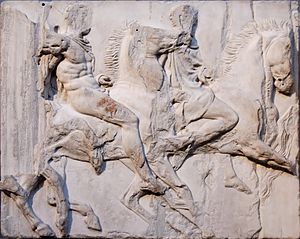
The sculpture of ancient Greece is the main surviving type of fine ancient Greek art as, with the exception of painted ancient Greek pottery, almost no ancient Greek painting survives. Modern scholarship identifies three major stages in monumental sculpture in bronze and stone: the Archaic (from about 650 to 480 BC), Classical (480–323) and Hellenistic. At all periods there were great numbers of Greek terracotta figurines and small sculptures in metal and other materials.

The Greeks decided very early on that the human form was the most important subject for artistic endeavour.[1] Seeing their gods as having human form, there was little distinction between the sacred and the secular in art—the human body was both secular and sacred. A male nude of Apolloor Heracles had only slight differences in treatment to one of that year's Olympic boxing champion. The statue, originally single but by the Hellenistic period often in groups was the dominant form, though reliefs, often so "high" that they were almost free-standing, were also important.
Materials[edit]
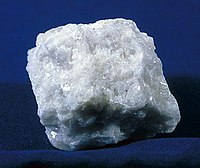
By the classical period, roughly the 5th and 4th centuries, monumental sculpture was composed almost entirely of marble or bronze; with cast bronze becoming the favoured medium for major works by the early 5th century; many pieces of sculpture known only in marble copies made for the Roman market were originally made in bronze. Smaller works were in a great variety of materials, many of them precious, with a very large production of terracotta figurines. The territories of ancient Greece, except for Sicily and southern Italy, contained abundant supplies of fine marble, with Pentelic and Parian marble the most highly prized. The ores for bronze were also relatively easy to obtain.[2]

Both marble and bronze are easy to form and very durable; as in most ancient cultures there were no doubt also traditions of sculpture in wood about which we know very little, other than acrolithic sculptures, usually large, with the head and exposed flesh parts in marble but the clothed parts in wood. As bronze always had a significant scrap value very few original bronzes have survived, though in recent years marine archaeology or trawling has added a few spectacular finds, such as the Artemision Bronze and Riace bronzes, which have significantly extended modern understanding. Many copies of the Roman period are marble versions of works originally in bronze. Ordinary limestone was used in the Archaic period, but thereafter, except in areas of modern Italy with no local marble, only for architectural sculpture and decoration. Plaster or stucco was sometimes used for the hair only.[3]
Chryselephantine sculptures, used for temple cult images and luxury works, used gold, most often in leaf formand ivory for all or parts (faces and hands) of the figure, and probably gems and other materials, but were much less common, and only fragments have survived. Many statues were given jewellery, as can be seen from the holes for attaching it, and held weapons or other objects in different materials.[4]

Painting of sculpture[edit]
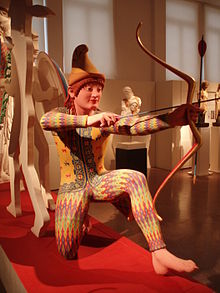
Ancient Greek sculptures were originally painted in multiple colors;[5][6][7] they only appear colorless today because the original pigments have deteriorated.[5][6] References to painted sculptures are found in classical literature,[5][6] including in Euripides's Helen in which the eponymous characterlaments, "If only I could shed my beauty and assume an uglier aspect/The way you would wipe color off a statue."[6] Some well-preserved statues still bear traces of pigments[5] and archaeologists can reconstruct what they may have originally looked like.[5][6][7]
Development of Greek sculptures[edit]
Geometric[edit]
It is commonly thought that the earliest incarnation of Greek sculpture was in the form of wooden or ivory cult statues, first described by Pausanias as xoana.[8]No such statues survive, and the descriptions of them are vague, despite the fact that they were probably objects of veneration for hundreds of years. The first piece of Greek statuary to be reassembled since is probably the Lefkandi Centaur, a terracotta sculpture found on the island of Euboea, dated c. 920 BC. The statue was constructed in parts, before being dismembered and buried in two separate graves. The centaur has an intentional mark on its knee, which has led researchers to postulate[9] that the statue might portray Cheiron, presumably kneeling wounded from Herakles' arrow. If so, it would be the earliest known depiction of myth in the history of Greek sculpture.
The forms from the Geometric period (c. 900 to 700 BC) were chiefly terracotta figurines, bronzes, and ivories. The bronzes are chiefly tripod cauldrons, and freestanding figures or groups. Such bronzes were made using the lost-wax technique probably introduced from Syria, and are almost entirely votive offerings left at the Hellenistic civilization Panhellenic sanctuaries of Olympia, Delos, and Delphi, though these were likely manufactured elsewhere, as a number of local styles may be identified by finds from Athens, Argos, and Sparta. Typical works of the era include the Karditsa warrior (Athens Br. 12831) and the many examples of the equestrian statuette (for example, NY Met. 21.88.24 online). The repertory of this bronze work is not confined to standing men and horses, however, as vase paintings of the time also depict imagery of stags, birds, beetles, hares, griffins and lions. There are no inscriptions on early-to-middle geometric sculpture, until the appearance of the Mantiklos "Apollo" (Boston 03.997) of the early 7th century BC found in Thebes. The figure is that of a standing man with a pseudo-daedalic form, underneath which lies the hexameter inscription reading "Mantiklos offered me as a tithe to Apollo of the silver bow; do you, Phoibos [Apollo], give some pleasing favour in return".[10] Apart from the novelty of recording its own purpose, this sculpture adapts the formulae of oriental bronzes, as seen in the shorter more triangular face and slightly advancing left leg. This is sometimes seen as anticipating the greater expressive freedom of the 7th century BC and, as such, the Mantiklos figure is referred to in some quarters as proto-Daedalic.
Archaic[edit]


Inspired by the monumental stone sculpture of ancient Egypt[12] and Mesopotamia, the Greeks began again to carve in stone. Free-standing figures share the solidity and frontal stance characteristic of Eastern models, but their forms are more dynamic than those of Egyptian sculpture, as for example the Lady of Auxerre and Torso of Hera (Early Archaic period, c. 660–580 BC, both in the Louvre, Paris). After about 575 BC, figures such as these, both male and female, began wearing the so-called archaic smile. This expression, which has no specific appropriateness to the person or situation depicted, may have been a device to give the figures a distinctive human characteristic.
Three types of figures prevailed—the standing nude male youth (kouros, plural kouroi), the standing draped girl (kore, plural korai), and the seated woman. All emphasize and generalize the essential features of the human figure and show an increasingly accurate comprehension of human anatomy. The youths were either sepulchral or votive statues. Examples are Apollo (Metropolitan Museum of Art, New York), an early work; the Strangford Apollo from Anafi (British Museum), a much later work; and the Anavyssos Kouros (National Archaeological Museum of Athens). More of the musculature and skeletal structure is visible in this statue than in earlier works. The standing, draped girls have a wide range of expression, as in the sculptures in the Acropolis Museum of Athens. Their drapery is carved and painted with the delicacy and meticulousness common in the details of sculpture of this period.
The Greeks thus decided very early on that the human form was the most important subject for artistic endeavour. Seeing their gods as having human form, there was no distinction between the sacred and the secular in art—the human body was both secular and sacred. A male nude without any attachments such as a bow or a club, could just as easily be Apollo or Heracles as that year's Olympic boxing champion. In the Archaic Period the most important sculptural form was the kouros (See for example Biton and Kleobis). The kore was also common; Greek art did not present female nudity (unless the intention was pornographic) until the 4th century BC, although the development of techniques to represent drapery is obviously important.
As with pottery, the Greeks did not produce sculpture merely for artistic display. Statues were commissioned either by aristocratic individuals or by the state, and used for public memorials, as offerings to temples, oracles and sanctuaries (as is frequently shown by inscriptions on the statues), or as markers for graves. Statues in the Archaic period were not all intended to represent specific individuals. They were depictions of an ideal—beauty, piety, honor or sacrifice. These were always depictions of young men, ranging in age from adolescence to early maturity, even when placed on the graves of (presumably) elderly citizens. Kouroi were all stylistically similar. Graduations in the social stature of the person commissioning the statue were indicated by size rather than artistic innovations.
Classical[edit]


The Classical period saw a revolution of Greek sculpture, sometimes associated by historians with the popular culture surrounding the introduction of democracy and the end of the aristocratic culture associated with the kouroi. The Classical period saw changes in the style and function of sculpture, along with a dramatic increase in the technical skill of Greek sculptors in depicting realistic human forms. Poses also became more naturalistic, notably during the beginning of the period. This is embodied in works such as the Kritios Boy (480 BC), sculpted with the earliest known use of contrapposto ('counterpose'), and the Charioteer of Delphi (474 BC), which demonstrates a transition to more naturalistic sculpture. From about 500 BC, Greek statues began increasingly to depict real people, as opposed to vague interpretations of myth or entirely fictional votive statues, although the style in which they were represented had not yet developed into a realistic form of portraiture. The statues of Harmodius and Aristogeiton, set up in Athens mark the overthrow of the aristocratic tyranny, and have been said to be the first public monuments to show actual individuals.
The Classical Period also saw an increase in the use of statues and sculptures as decorations of buildings. The characteristic temples of the Classical era, such as the Parthenon in Athens, and the Temple of Zeus at Olympia, used relief sculpture for decorative friezes, and sculpture in the round to fill the triangular fields of the pediments. The difficult aesthetic and technical challenge stimulated much in the way of sculptural innovation. Most of these works survive only in fragments, for example the Parthenon Marbles, roughly half of which are in the British Museum.
Funeral statuary evolved during this period from the rigid and impersonal kouros of the Archaic period to the highly personal family groups of the Classical period. These monuments are commonly found in the suburbs of Athens, which in ancient times were cemeteries on the outskirts of the city. Although some of them depict "ideal" types—the mourning mother, the dutiful son—they increasingly depicted real people, typically showing the departed taking his dignified leave from his family. This is a notable increase in the level of emotion relative to the Archaic and Geometrical eras.
Another notable change is the burgeoning of artistic credit in sculpture. The entirety of information known about sculpture in the Archaic and Geometrical periods are centered upon the works themselves, and seldom, if ever, on the sculptors. Examples include Phidias, known to have overseen the design and building of the Parthenon, and Praxiteles, whose nude female sculptures were the first to be considered artistically respectable. Praxiteles' Aphrodite of Knidos, which survives in copies, was often referenced to and praised by Pliny the Elder.
Lysistratus is said to have been the first to use plaster molds taken from living people to produce lost-wax portraits, and to have also developed a technique of casting from existing statues. He came from a family of sculptors and his brother, Lysippos of Sicyon, produced fifteen hundred statues in his career.[13]
The Statue of Zeus at Olympia and the Statue of Athena Parthenos (both chryselephantine and executed by Phidias or under his direction, and considered to be the greatest of the Classical Sculptures), are lost, although smaller copies (in other materials) and good descriptions of both still exist. Their size and magnificence prompted rivals to seize them in the Byzantine period, and both were removed to Constantinople, where they were later destroyed.
Hellenistic[edit]
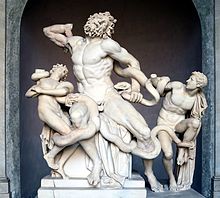

The transition from the Classical to the Hellenistic period occurred during the 4th century BC. Greek art became increasingly diverse, influenced by the cultures of the peoples drawn into the Greek orbit, by the conquests of Alexander the Great (336 to 323 BC). In the view of some art historians, this is described as a decline in quality and originality; however, individuals of the time may not have shared this outlook. Many sculptures previously considered classical masterpieces are now known to be of the Hellenistic age. The technical ability of the Hellenistic sculptors are clearly in evidence in such major works as the Winged Victory of Samothrace, and the Pergamon Altar. New centres of Greek culture, particularly in sculpture, developed in Alexandria, Antioch, Pergamum, and other cities. By the 2nd century BC, the rising power of Rome had also absorbed much of the Greek tradition—and an increasing proportion of its products as well.
During this period, sculpture again experienced a shift towards increasing naturalism. Common people, women, children, animals, and domestic scenes became acceptable subjects for sculpture, which was commissioned by wealthy families for the adornment of their homes and gardens. Realistic figures of men and women of all ages were produced, and sculptors no longer felt obliged to depict people as ideals of beauty or physical perfection. At the same time, new Hellenistic cities springing up in Egypt, Syria, and Anatolia required statues depicting the gods and heroes of Greece for their temples and public places. This made sculpture, like pottery, an industry, with the consequent standardisation and (some) lowering of quality. For these reasons, quite a few more Hellenistic statues survive to the present than those of the Classical period.
Alongside the natural shift towards naturalism, there was a shift in expression of the sculptures as well. Sculptures began expressing more power and energy during this time period. An easy way to see the shift in expressions during the Hellenistic period would be to compare it to the sculptures of the Classical period. The classical period had sculptures such as the Charioteer of Delphi expressing humility. The sculptures of the Hellenistic period however saw greater expressions of power and energy as demonstrated in the Jockey of Artemision.[16]
Some of the best known Hellenistic sculptures are the Winged Victory of Samothrace (2nd or 1st century BC), the statue of Aphrodite from the island of Melos known as the Venus de Milo (mid-2nd century BC), the Dying Gaul (about 230 BC), and the monumental group Laocoön and His Sons(late 1st century BC). All these statues depict Classical themes, but their treatment is far more sensuous and emotional than the austere taste of the Classical period would have allowed or its technical skills permitted. Hellenistic sculpture was also marked by an increase in scale, which culminated in the Colossus of Rhodes (late 3rd century), thought to have been roughly the same size as the Statue of Liberty. The combined effect of earthquakes and looting have destroyed this as well as any other very large works of this period that might have existed.
Following the conquests of Alexander the Great, Greek culture spread as far as India, as revealed by the excavations of Ai-Khanoum in eastern Afghanistan, and the civilization of the Greco-Bactrians and the Indo-Greeks. Greco-Buddhist art represented a syncretism between Greek art and the visual expression of Buddhism. Discoveries made since the end of the 19th century surrounding the (now submerged) ancient Egyptian city of Heracleum include a 4th-century BC depiction of Isis. The depiction is unusually sensual for depictions of the Egyptian goddess, as well as being uncharacteristically detailed and feminine, marking a combination of Egyptian and Hellenistic forms around the time of Alexander the Great's conquest of Egypt.
In Goa, India, were found Buddha statues in Greek styles. These are attributed to Greek converts to Buddhism, many of whom are known to have settled in Goa during Hellenistic times.[17][18]
Cult images[edit]

All ancient Greek temples and Roman temples normally contained a cult image in the cella. Access to the cella varied, but apart from the priests, at the least some of the general worshippers could access the cella some of the time, though sacrifices to the deity were normally made on altars outside in the temple precinct (temenos in Greek). Some cult images were easy to see, and were what we would call major tourist attractions. The image normally took the form of a statue of the deity, originally less than life-size, then typically roughly life-size, but in some cases many times life-size, in marble or bronze, or in the specially prestigious form of a Chryselephantine statue using ivory plaques for the visible parts of the body and gold for the clothes, around a wooden framework. The most famous Greek cult images were of this type, including the Statue of Zeus at Olympia, and Phidias's Athena Parthenos in the Parthenon in Athens, both colossal statues now completely lost. Fragments of two chryselephantine statues from Delphi have been excavated. Cult images generally held or wore identifying attributes, which is one way of distinguishing them from the many other statues of deities in temples and other locations.
The acrolith was another composite form, this time a cost-saving one with a wooden body. A xoanon was a primitive and symbolic image, usually in wood, some perhaps comparable to the Hindu lingam, although the oldest cult image from the Greek world, the Minoan Palaikastro Kouros, is highly sophisticated. Many xoana were retained and revered for their antiquity in later periods; they were often light enough to be carried in processions. Many of the Greek statues well known from Roman marble copies were originally temple cult images, which in some cases, such as the Apollo Barberini, can be credibly identified. A very few actual originals survive, for example the bronze Piraeus Athena (2.35 metres high, including a helmet).
In Greek and Roman mythology, a "palladium" was an image of great antiquity on which the safety of a city was said to depend, especially the wooden one that Odysseus and Diomedes stole from the citadel of Troy and which was later taken to Rome by Aeneas. (The Roman story was related in Virgil's Aeneid and other works.)
| Part of a series on the |
| History of Greek art |
|---|
 |
Drapery[edit]
Female[edit]
Male[edit]
See also[edit]
- Meniskos, a device for protecting statues placed outside
“Only Thing We Have to Fear Is Fear Itself”: FDR’s First Inaugural Address
Please note that the audio is an excerpt from the full address.
Listen to Audio:
I am certain that my fellow Americans expect that on my induction into the Presidency I will address them with a candor and a decision which the present situation of our people impel. This is preeminently the time to speak the truth, the whole truth, frankly and boldly. Nor need we shrink from honestly facing conditions in our country today. This great Nation will endure as it has endured, will revive and will prosper. So, first of all, let me assert my firm belief that the only thing we have to fear is fear itself—nameless, unreasoning, unjustified terror which paralyzes needed efforts to convert retreat into advance. In every dark hour of our national life a leadership of frankness and vigor has met with that understanding and support of the people themselves which is essential to victory. I am convinced that you will again give that support to leadership in these critical days.
In such a spirit on my part and on yours we face our common difficulties. They concern, thank God, only material things. Values have shrunken to fantastic levels; taxes have risen; our ability to pay has fallen; government of all kinds is faced by serious curtailment of income; the means of exchange are frozen in the currents of trade; the withered leaves of industrial enterprise lie on every side; farmers find no markets for their produce; the savings of many years in thousands of families are gone.
More important, a host of unemployed citizens face the grim problem of existence, and an equally great number toil with little return. Only a foolish optimist can deny the dark realities of the moment.
Yet our distress comes from no failure of substance. We are stricken by no plague of locusts. Compared with the perils which our forefathers conquered because they believed and were not afraid, we have still much to be thankful for. Nature still offers her bounty and human efforts have multiplied it. Plenty is at our doorstep, but a generous use of it languishes in the very sight of the supply. Primarily this is because the rulers of the exchange of mankind’s goods have failed, through their own stubbornness and their own incompetence, have admitted their failure, and abdicated. Practices of the unscrupulous money changers stand indicted in the court of public opinion, rejected by the hearts and minds of men.
True they have tried, but their efforts have been cast in the pattern of an outworn tradition. Faced by failure of credit they have proposed only the lending of more money. Stripped of the lure of profit by which to induce our people to follow their false leadership, they have resorted to exhortations, pleading tearfully for restored confidence. They know only the rules of a generation of self-seekers. They have no vision, and when there is no vision the people perish.
The money changers have fled from their high seats in the temple of our civilization. We may now restore that temple to the ancient truths. The measure of the restoration lies in the extent to which we apply social values more noble than mere monetary profit.
Happiness lies not in the mere possession of money; it lies in the joy of achievement, in the thrill of creative effort. The joy and moral stimulation of work no longer must be forgotten in the mad chase of evanescent profits. These dark days will be worth all they cost us if they teach us that our true destiny is not to be ministered unto but to minister to ourselves and to our fellow men.
Recognition of the falsity of material wealth as the standard of success goes hand in hand with the abandonment of the false belief that public office and high political position are to be valued only by the standards of pride of place and personal profit; and there must be an end to a conduct in banking and in business which too often has given to a sacred trust the likeness of callous and selfish wrongdoing. Small wonder that confidence languishes, for it thrives only on honesty, on honor, on the sacredness of obligations, on faithful protection, on unselfish performance; without them it cannot live.
Restoration calls, however, not for changes in ethics alone. This Nation asks for action, and action now.
Our greatest primary task is to put people to work. This is no unsolvable problem if we face it wisely and courageously. It can be accomplished in part by direct recruiting by the Government itself, treating the task as we would treat the emergency of a war, but at the same time, through this employment, accomplishing greatly needed projects to stimulate and reorganize the use of our natural resources.
Hand in hand with this we must frankly recognize the overbalance of population in our industrial centers and, by engaging on a national scale in a redistribution, endeavor to provide a better use of the land for those best fitted for the land. The task can be helped by definite efforts to raise the values of agricultural products and with this the power to purchase the output of our cities. It can be helped by preventing realistically the tragedy of the growing loss through foreclosure of our small homes and our farms. It can be helped by insistence that the Federal, State, and local governments act forthwith on the demand that their cost be drastically reduced. It can be helped by the unifying of relief activities which today are often scattered, uneconomical, and unequal. It can be helped by national planning for and supervision of all forms of transportation and of communications and other utilities which have a definitely public character. There are many ways in which it can be helped, but it can never be helped merely by talking about it. We must act and act quickly.
Finally, in our progress toward a resumption of work we require two safeguards against a return of the evils of the old order; there must be a strict supervision of all banking and credits and investments; there must be an end to speculation with other people’s money, and there must be provision for an adequate but sound currency.
There are the lines of attack. I shall presently urge upon a new Congress in special session detailed measures for their fulfillment, and I shall seek the immediate assistance of the several States.
Through this program of action we address ourselves to putting our own national house in order and making income balance outgo. Our international trade relations, though vastly important, are in point of time and necessity secondary to the establishment of a sound national economy. I favor as a practical policy the putting of first things first. I shall spare no effort to restore world trade by international economic readjustment, but the emergency at home cannot wait on that accomplishment.
The basic thought that guides these specific means of national recovery is not narrowly nationalistic. It is the insistence, as a first consideration, upon the interdependence of the various elements in all parts of the United States—a recognition of the old and permanently important manifestation of the American spirit of the pioneer. It is the way to recovery. It is the immediate way. It is the strongest assurance that the recovery will endure.
In the field of world policy I would dedicate this Nation to the policy of the good neighbor—the neighbor who resolutely respects himself and, because he does so, respects the rights of others—the neighbor who respects his obligations and respects the sanctity of his agreements in and with a world of neighbors.
If I read the temper of our people correctly, we now realize as we have never realized before our interdependence on each other; that we can not merely take but we must give as well; that if we are to go forward, we must move as a trained and loyal army willing to sacrifice for the good of a common discipline, because without such discipline no progress is made, no leadership becomes effective. We are, I know, ready and willing to submit our lives and property to such discipline, because it makes possible a leadership which aims at a larger good. This I propose to offer, pledging that the larger purposes will bind upon us all as a sacred obligation with a unity of duty hitherto evoked only in time of armed strife.
With this pledge taken, I assume unhesitatingly the leadership of this great army of our people dedicated to a disciplined attack upon our common problems.
Action in this image and to this end is feasible under the form of government which we have inherited from our ancestors. Our Constitution is so simple and practical that it is possible always to meet extraordinary needs by changes in emphasis and arrangement without loss of essential form. That is why our constitutional system has proved itself the most superbly enduring political mechanism the modern world has produced. It has met every stress of vast expansion of territory, of foreign wars, of bitter internal strife, of world relations.
It is to be hoped that the normal balance of executive and legislative authority may be wholly adequate to meet the unprecedented task before us. But it may be that an unprecedented demand and need for undelayed action may call for temporary departure from that normal balance of public procedure.
I am prepared under my constitutional duty to recommend the measures that a stricken nation in the midst of a stricken world may require. These measures, or such other measures as the Congress may build out of its experience and wisdom, I shall seek, within my constitutional authority, to bring to speedy adoption.
But in the event that the Congress shall fail to take one of these two courses, and in the event that the national emergency is still critical, I shall not evade the clear course of duty that will then confront me. I shall ask the Congress for the one remaining instrument to meet the crisis—broad Executive power to wage a war against the emergency, as great as the power that would be given to me if we were in fact invaded by a foreign foe.
For the trust reposed in me I will return the courage and the devotion that befit the time. I can do no less.
We face the arduous days that lie before us in the warm courage of the national unity; with the clear consciousness of seeking old and precious moral values; with the clean satisfaction that comes from the stern performance of duty by old and young alike. We aim at the assurance of a rounded and permanent national life.
We do not distrust the future of essential democracy. The people of the United States have not failed. In their need they have registered a mandate that they want direct, vigorous action. They have asked for discipline and direction under leadership. They have made me the present instrument of their wishes. In the spirit of the gift I take it.
In this dedication of a Nation we humbly ask the blessing of God. May He protect each and every one of us. May He guide me in the days to come.
Source: Franklin D. Roosevelt, Inaugural Address, March 4, 1933, as published in Samuel Rosenman, ed., The Public Papers of Franklin D. Roosevelt, Volume Two: The Year of Crisis, 1933 (New York: Random House, 1938), 11–16.
Easter Island
This article or section should specify the language of its non-English content, using {{lang}}, {{transliteration}} for transliterated languages, and {{IPA}} for phonetic transcriptions, with an appropriate ISO 639 code. Wikipedia's multilingual support templates may also be used. (April 2022) |
Easter Island | |
|---|---|
 Outer slope of the Rano Raraku volcano, the quarry of the Moais with many uncompleted statues. | |
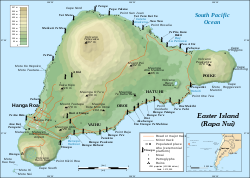 | |
| Coordinates: 27°7′S 109°22′W | |
| Country | Chile |
| Region | Valparaíso |
| Province | Isla de Pascua |
| Commune | Isla de Pascua |
| Seat | Hanga Roa |
| Government | |
| • Type | Municipality |
| • Body | Municipal council |
| • Provincial Governor | Laura Alarcón Rapu (IND) |
| • Alcalde | Pedro Edmunds Paoa(PRO) |
| Area | |
| • Total | 163.6 km2 (63.2 sq mi) |
| Highest elevation | 507 m (1,663 ft) |
| Lowest elevation | 0 m (0 ft) |
| Population (2017 census) | |
| • Total | 7,750[1] |
| • Density | 47/km2 (120/sq mi) |
| Time zone | UTC−6 (EAST) |
| • Summer (DST) | UTC−5 (EASST) |
| Country Code | +56 |
| Currency | Peso (CLP) |
| Language | Spanish, Rapa Nui |
| Driving side | right |
| Website | dppisladepascua |
| NGA UFI=-905269 | |
| UNESCO World Heritage Site | |
|---|---|
 Moai at Rano Raraku, Easter Island | |
| Criteria | Cultural: i, iii, v |
| Reference | 715 |
| Inscription | 1995 (19th Session) |
| Area | 71.3 km2 (28 square miles) |
Easter Island (Spanish: Isla de Pascua [ˈisla ðe ˈpaskwa]; Rapa Nui: Rapa Nui) is an island and special territory of Chile in the southeastern Pacific Ocean, at the southeasternmost point of the Polynesian Triangle in Oceania. The island is most famous for its nearly 1,000 extant monumental statues, called moai, which were created by the early Rapa Nui people. In 1995, UNESCO named Easter Island a World Heritage Site, with much of the island protected within Rapa Nui National Park.
Experts disagree on when the island's Polynesian inhabitants first reached the island. While many in the research community cited evidence that they arrived around the year 800, a 2007 study found compelling evidence that they arrived closer to 1200.[3][4] The inhabitants created a thriving and industrious culture, as evidenced by the island's numerous enormous stone moai and other artifacts. But land clearing for cultivation and the introduction of the Polynesian rat led to gradual deforestation.[3] By the time of European arrival in 1722, the island's population was estimated to be 2,000 to 3,000. European diseases, Peruvian slave raiding expeditions in the 1860s, and emigration to other islands such as Tahiti further depleted the population, reducing it to a low of 111 native inhabitants in 1877.[5]
Chile annexed Easter Island in 1888. In 1966, the Rapa Nui were granted Chilean citizenship. In 2007 the island gained the constitutional status of "special territory" (Spanish: territorio especial). Administratively, it belongs to the Valparaíso Region, constituting a single commune (Isla de Pascua) of the Province of Isla de Pascua.[6] The 2017 Chilean census registered 7,750 people on the island, of whom 3,512 (45%) considered themselves Rapa Nui.[7]
Easter Island is one of the world's remotest inhabited islands.[8] The nearest inhabited land (around 50 residents in 2013) is Pitcairn Island, 2,075 kilometres (1,289 mi) away;[9] the nearest town with a population over 500 is Rikitea, on the island of Mangareva, 2,606 km (1,619 mi) away; the nearest continental point lies in central Chile, 3,512 km (2,182 mi) away.
Etymology
The name "Easter Island" was given by the island's first recorded European visitor, the Dutch explorer Jacob Roggeveen, who encountered it on Easter Sunday (5 April), 1722, while searching for "Davis Land".[10] Roggeveen named it Paasch-Eyland (18th-century Dutch for "Easter Island").[11][12] The island's official Spanish name, Isla de Pascua, also means "Easter Island".
The current Polynesian name of the island, Rapa Nui ("Big Rapa"), was coined after the slave raids of the early 1860s, and refers to the island's topographic resemblance to the island of Rapa in the Bass Islandsof the Austral Islands group.[13] Norwegian ethnographer Thor Heyerdahl argued that Rapa was Easter Island's original name and that the Bass Islands' Rapa (Rapa Iti) was named by refugees from it.[14]
The phrase Te pito o te henua has been said to be the island's original name since French ethnologist Alphonse Pinart gave it the romantic translation "the Navel of the World" in his Voyage à l'Île de Pâques, published in 1877.[15] William Churchill (1912) inquired about the phrase and was told that there were three te pito o te henua, these being the three capes (land's ends) of the island. The phrase appears to have been used in the same sense as the designation "Land's End" at the tip of Cornwall. He was unable to elicit a Polynesian name for the island and concluded that there may not have been one.[16]
According to Barthel (1974), oral tradition has it that the island was first named Te pito o te kainga a Hau Maka, "The little piece of land of Hau Maka".[17] But there are two words pronounced pito in Rapa Nui, one meaning "end" and one "navel", and the phrase can thus also mean "The Navel of the World". Another name, Mata ki te rangi, means "Eyes looking to the sky".[18]
Islanders are referred to in Spanish as pascuense, but members of the indigenous community are commonly called Rapa Nui.
Felipe González de Ahedo named it Isla de San Carlos ("Saint Charles's Island", the patron saint of Charles III of Spain) or Isla de David (probably the phantom island of Davis Land; sometimes translated as "Davis's Island"[19]) in 1770.[20]
History
Introduction
Oral tradition states the island was first settled by a two-canoe expedition originating from Marae Renga (or Marae Toe Hau—otherwise known as Cook Islands), and led by the chief Hotu Matu'a and his captain Tu'u ko Iho. The island was first scouted after Haumaka dreamed of such a far-off country; Hotu deemed it a worthwhile place to flee from a neighboring chief, one to whom he had already lost three battles. At their time of arrival, the island had one lone settler, Nga Tavake 'a Te Rona. After a brief stay at Anakena, the colonists settled in different parts of the island. Hotu's heir, Tu'u ma Heke, was born on the island. Tu'u ko Iho is viewed as the leader who brought the statues and caused them to walk.[21]
The Easter Islanders are considered Southeast Polynesians. Similar sacred zones with statuary (maraeand ahu) in East Polynesia demonstrate homology with most of Eastern Polynesia. At contact, populations were about 3,000–4,000.[21]: 17–18, 20–21, 31, 41–45
By the 15th century, two confederations, hanau, of social groupings, mata, existed, based on lineage. The western and northern portion of the island belonged to the Tu'u, which included the royal Miru, with the royal center at Anakena, though Tahai and Te Peu served as earlier capitals. The eastern part of the island belonged to the 'Otu 'Itu. Shortly after the Dutch visit, from 1724 until 1750, the 'Otu 'Itu fought the Tu'u for control of the island. This continued until the 1860s. Famine followed the burning of huts and the destruction of fields. Social control vanished as the ordered way of life gave way to lawlessness and predatory bands as the warrior class took over. Homelessness prevailed, with many living underground. After the Spanish visit, from 1770 onward, a period of statue toppling, huri mo'ai, commenced. This was an attempt by competing groups to destroy the socio-spiritual power, or mana, represented by statues, making sure to break them in the fall to ensure they were dead and without power. None were left standing by the time of the arrival of the French missionaries in the 1860s.[21]: 21–24, 27, 54–56, 64–65
Between 1862 and 1888, about 94% of the population perished or emigrated. The island was victimized by blackbirding from 1862 to 1863, resulting in the abduction or killing of about 1,500, with 1,408 working as indentured servants in Peru. Only about a dozen eventually returned to Easter Island, but they brought smallpox, which decimated the remaining population of 1,500. Those who perished included the island's tumu ivi 'atua, bearers of the island's culture, history, and genealogy besides the rongorongoexperts.[21]: 86–91
Rapa Nui settlement

Estimated dates of initial settlement of Easter Island have ranged from 300 to 1200 CE, though the current best estimate for colonization is in the 12th century CE. Easter Island colonization likely coincided with the arrival of the first settlers in Hawaii. Rectifications in radiocarbon dating have changed almost all of the previously posited early settlement dates in Polynesia. Ongoing archaeological studies provide this late date: "Radiocarbon dates for the earliest stratigraphic layers at Anakena, Easter Island, and analysis of previous radiocarbon dates imply that the island was colonized late, about 1200 CE. Significant ecological impacts and major cultural investments in monumental architecture and statuary thus began soon after initial settlement."[22][23]
According to oral tradition, the first settlement was at Anakena. Researchers have noted that the Caleta Anakena landing point provides the island's best shelter from prevailing swells as well as a sandy beach for canoe landings and launchings, so it is a likely early place of settlement. However radiocarbon dating concludes that other sites preceded Anakena by many years, especially the Tahai by several centuries.
The island was populated by Polynesians who most likely navigated in canoes or catamarans from the Gambier Islands (Mangareva, 2,600 km (1,600 mi) away) or the Marquesas Islands, 3,200 km (2,000 mi) away. According to some theories, such as the Polynesian Diaspora Theory, there is a possibility that early Polynesian settlers arrived from South America due to their remarkable sea-navigation abilities. Theorists have supported this through the agricultural evidence of the sweet potato. The sweet potato was a favoured crop in Polynesian society for generations but it originated in South America, suggesting interaction between these two geographic areas.[24] However, recent research suggests that sweet potatoes may have spread to Polynesia by long-distance dispersal long before the Polynesians arrived.[25] When James Cook visited the island, one of his crew members, a Polynesian from Bora Bora, Hitihiti, was able to communicate with the Rapa Nui.[26]: 296–297 It has been noted that the early jumping-off points for the early Polynesian colonization of Easter Island are more likely to have been from Mangareva, Pitcairn and Henderson, which lie about halfway between the Marquesas and Easter.[27] It has been observed that there is great similarity with the Rapa Nui language and Early Mangarevan,[27] similarities between a statue found in Pitcairn and some statues found in Easter Island,[27] the resemblance of tool styles in Easter Island to those in Mangareva and Pitcairn,[27] and correspondences of skulls found in Easter Island to two skulls found in Henderson,[27] all suggesting Henderson and Pitcairn islands to have been early stepping-stones from Mangareva to Easter Island,[27] which in 1999, a voyage with reconstructed Polynesian boats was able to reach Easter Island from Mangareva after merely a seventeen and a half day voyage.[27][28]

According to oral traditions recorded by missionaries in the 1860s, the island originally had a strong class system: an ariki, or high chief, wielded great power over nine other clans and their respective chiefs. The high chief was the eldest descendant through first-born lines of the island's legendary founder, Hotu Matu'a. The most visible element in the culture was the production of massive moai statues that some believe represented deified ancestors. According to National Geographic, "Most scholars suspect that the moai were created to honor ancestors, chiefs, or other important personages, However, no written and little oral history exists on the island, so it's impossible to be certain."[30]
It was believed that the living had a symbiotic relationship with the dead in which the dead provided everything that the living needed (health, fertility of land and animals, fortune etc.) and the living, through offerings, provided the dead with a better place in the spirit world. Most settlements were located on the coast, and most moai were erected along the coastline, watching over their descendants in the settlements before them, with their backs toward the spirit world in the sea.
Ecocide theory
In his book Collapse: How Societies Choose to Fail or Succeed, Jared Diamond suggested that cannibalism took place on Easter Island after the construction of the moai contributed to environmental degradation when extreme deforestation (ecocide) destabilized an already precarious ecosystem.[31] Archeological record shows that at the time of the initial settlement the island was home to many species of trees, including at least three species which grew up to 15 metres (49 ft) or more: Paschalococos (possibly the largest palm trees in the world at the time), Alphitonia zizyphoides, and Elaeocarpus rarotongensis. At least six species of land birds were known to live on the island. A major factor that contributed to the extinction of multiple plant species was the introduction of the Polynesian rat. Studies by paleobotanists have shown rats can dramatically affect the reproduction of vegetation in an ecosystem. In the case of Rapa Nui, recovered plant seed shells showed markings of being gnawed on by rats.[3] This version of the history speculates a high former population to the island that had already declined before Europeans arrived. Barbara A. West wrote, "Sometime before the arrival of Europeans on Easter Island, the Rapanui experienced a tremendous upheaval in their social system brought about by a change in their island's ecology... By the time of European arrival in 1722, the island's population had dropped to 2,000–3,000 from a high of approximately 15,000 just a century earlier."[32]

By that time, 21 species of trees and all species of land birds became extinct through some combination of over-harvesting, over-hunting, rat predation, and climate change. The island was largely deforested, and it did not have any trees taller than 3 m (9.8 ft). Loss of large trees meant that residents were no longer able to build seaworthy vessels, significantly diminishing their fishing abilities. According to this version of the history, the trees were used as rollers to move the statues to their place of erection from the quarry at Rano Raraku.[33]Deforestation also caused erosion which caused a sharp decline in agricultural production.[3] This was exacerbated by the loss of land birds and the collapse in seabird populations as a source of food. By the 18th century, islanders were largely sustained by farming, with domestic chickens as the primary source of protein.[34]
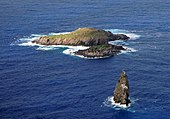
As the island became overpopulated and resources diminished, warriors known as matatoa gained more power and the Ancestor Cult ended, making way for the Bird Man Cult. Beverly Haun wrote, "The concept of mana (power) invested in hereditary leaders was recast into the person of the birdman, apparently beginning circa 1540, and coinciding with the final vestiges of the moai period."[35]This cult maintained that, although the ancestors still provided for their descendants, the medium through which the living could contact the dead was no longer statues but human beings chosen through a competition. The god responsible for creating humans, Makemake, played an important role in this process. Katherine Routledge, who systematically collected the island's traditions in her 1919 expedition,[36] showed that the competitions for Bird Man (Rapa Nui: tangata manu) started around 1760, after the arrival of the first Europeans, and ended in 1878, with the construction of the first church by Roman Catholic missionaries who formally arrived in 1864. Petroglyphs representing Bird Men on Easter Island are the same as some in Hawaii, indicating that this concept was probably brought by the original settlers; only the competition itself was unique to Easter Island. According to Diamond and Heyerdahl's version of the island's history, the huri mo'ai – "statue-toppling" – continued into the 1830s as a part of fierce internal wars. By 1838, the only standing moai were on the slopes of Rano Raraku, in Hoa Hakananai'a in Orongo, and Ariki Paro in Ahu Te Pito Kura.
Criticism of the ecocide theory
Diamond and West's version of the history is highly controversial. A study headed by Douglas Owsley published in 1994 asserted that there is little archaeological evidence of pre-European societal collapse. Bone pathology and osteometric data from islanders of that period clearly suggest few fatalities can be attributed directly to violence.[37] Research by Binghamton University anthropologists Robert DiNapoli and Carl Lipo in 2021 suggests that the island experienced steady population growth from its initial settlement until European contact in 1722. The island never had more than a few thousand people prior to European contact, and their numbers were increasing rather than dwindling.[38][39]
Several works that address or counter Diamond's claims in Collapse have been published. In Ecological Catastrophe and Collapse -The Myth of "Ecocide" on Rapa Nui (Easter Island), Hunt and Lipo set out a claim-by-claim rebuttal to Diamond's claims. This includes, among other things, that deforestation began immediately, but the population grew while the forest declined as the land was converted to more productive farmland; that the island's population grew continuously up to the arrival of Europeans, with the only clear decline starting in the period of 1750-1800; that studies from other islands show clearly that Polynesian settlement without Polynesian rats is only associated with minimal forest loss while the arrival of rats without human settlement is devastating to forest populations; only species favoured by the rats for consumption were lost, not for example the native Sophora toromiro; that the island's drier, less predictable climate made it inherently more vulnerable to deforestation than other Polynesian islands; and that the population declines on Rapa Nui can be well attributed to the very mechanism described by Diamond in another of his books, Guns, Germs and Steel - the devastating impact of introduced diseases, raids, slavery, and exploitation on indigenous populations.[40]
In another work, Hunt and Lipo discuss more evidence against the ecocide theory. In addition to focusing on the settlement chronology, they note that the island has an abnormally low amount of evidence of warfare compared to other Polynesian islands, only relatively small-scale intergroup conflict. There are no fortifications, and the attributed obsidian mata'a "weapons" show rather evidence of having been used in agriculture, and indeed, match up with agricultural tools long recognized among artifacts of other Polynesian peoples.[41] Evidence of violence among skeletal remains of pre-European native skeletons is minimal, with only 2.5% of crania showing evidence of antemortem fractures,[41] consistent with Oswley's conclusions: "most skeletal injuries appear to have been nonlethal. Few fatalities were directly attributable to violence. The physical evidence suggests that the frequency of warfare and lethal events was exaggerated in folklore."[42] Despite known folklore, Hunt and Lipo also conclude that clear evidence of cannibalism among skeletal remains is entirely lacking.[41] They note that in the search for an ecocide theory, the far more obvious answer has long been known, and cite Metraux as evidence that "The historic slave-trading, epidemic disease, intensive sheep ranching, and tragic population collapse - indeed the genocide of the Rapanui People - is well documented, and has been recognized for a long time."[43] They conclude that when it comes to the science, "It does not matter whether Rapa Nui offers a parable for today's urgent environmental problems."[41]
In a 2010 metastudy on the state of the evidence, the Mulrooney et al. concludes that "To date, there is no conclusive evidence for the proposed precontact collapse of Rapa Nui society". In particular, the authors note that the obsidian usage trends lead to entirely different, self-inconsistent interpretations, while use of the oral histories of widespread intertribal warfare is undercut not just by early foreign visitors referring to the people as peaceful and docile, but the fact that the very wars in question were referred to as the wars of the throwing down of the statues, an event well-dated to not have begun until after western contact.[44]
European contact

The first recorded European contact with the island was on 5 April 1722, Easter Sunday, by Dutch navigator Jacob Roggeveen.[26] His visit resulted in the death of about a dozen islanders, including the tumu ivi 'atua, and the wounding of many others.[21]: 46–53
The next foreign visitors (on 15 November 1770) were two Spanish ships, San Lorenzo and Santa Rosalia, under the command of Captain Don Felipe Gonzalez de Ahedo.[26]: 238, 504 The Spanish were amazed by the "standing idols", all of which were erect at the time.[21]: 60–64
In 1776 the Chilean priest Juan Ignacio Molina highlights the island for its "monumental statues" in the fifth chapter on "Chilean Islands" of his book "Natural and Civil History of the Kingdom of Chile".[45]
Four years later, in 1774, British explorer James Cook visited Easter Island; he reported that some statues had been toppled. Through the interpretation of Hitihiti, Cook learned the statues commemorated their former high chiefs, including their names and ranks.[26]: 296–297

On 10 April 1786, French Admiral Jean-François de Galaup, comte de Lapérouse anchored at Hanga Roa at the start of a circumnavigation of the Pacific. He made a detailed map of the bay, including his anchorage points, as well as a more generalised map of the island, plus some illustrations.[46]
19th century
A series of devastating events killed or removed most of the population in the 1860s. In December 1862, Peruvian slave raiders struck. Violent abductions continued for several months, eventually capturing around 1,500 men and women, half of the island's population.[47] Among those captured were the island's paramount chief, his heir, and those who knew how to read and write the rongorongo script, the only Polynesian script to have been found to date, although debate exists about whether this is proto-writing or true writing.
When the slave raiders were forced to repatriate the people they had kidnapped, carriers of smallpox disembarked together with a few survivors on each of the islands.[48] This created devastating epidemics from Easter Island to the Marquesas islands. Easter Island's population was reduced to the point where some of the dead were not even buried.[21]: 91

The first Christian missionary, Eugène Eyraud, arrived in January 1864 and spent most of that year on the island and reported for the first time the existence of the so-called rongo-rongo tablets; but mass conversion of the Rapa Nui only came after his return in 1866 with Father Hippolyte Roussel. Two other missionaries arrived with Captain Jean-Baptiste Dutrou-Bornier. Eyraud contracted tuberculosis during the 1867 island epidemic, which took a quarter of the island's remaining population of 1,200, with only 930 Rapanui remaining. The dead included the last ariki mau, the last East Polynesia royal first-born son, the 13-year-old Manu Rangi. Eyraud died of tuberculosis in August 1868, by which time almost the entire Rapa Nui population had become Roman Catholic.[21]: 92–103
Tuberculosis, introduced by whalers in the mid-19th century, had already killed several islanders when Eugène Eyraud, died from this disease in 1867. It ultimately killed approximately a quarter of the island's population. In the following years, the managers of the sheep ranch and the missionaries started buying the newly available lands of the deceased, and this led to great confrontations between natives and settlers.

Jean-Baptiste Dutrou-Bornier bought up all of the island apart from the missionaries' area around Hanga Roaand moved a few hundred Rapa Nui to Tahiti to work for his backers. In 1871 the missionaries, having fallen out with Dutrou-Bornier, evacuated all but 171 Rapa Nui to the Gambier islands.[49] Those who remained were mostly older men. Six years later, only 111 people lived on Easter Island, and only 36 of them had any offspring.[50] From that point on, the island's population slowly recovered. But with over 97% of the population dead or gone in less than a decade, much of the island's cultural knowledge had been lost.
Alexander Salmon, Jr., the son of an English Jewish merchant and a Pōmare Dynasty princess, eventually worked to repatriate workers from his inherited copra plantation. He eventually bought up all lands on the island with the exception of the mission, and was its sole employer. He worked to develop tourism on the island and was the principal informant for the British and German archaeological expeditions for the island. He sent several pieces of genuine Rongorongo to his niece's husband, the German consul in Valparaíso, Chile. Salmon sold the Brander Easter Island holdings to the Chilean government on 2 January 1888, and signed as a witness to the cession of the island. He returned to Tahiti in December 1888. He effectively ruled the island from 1878 until his cession to Chile in 1888.
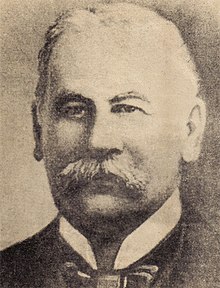
In 1887 Chile took concrete actions to incorporate the island into the national territory, at the request of the Chilean Navy Captain Policarpo Toro, who was concerned about the unprotected situation of the Rapa Nui for decades and began to influence the situation on his own initiative. Policarpo, through negotiations, bought land on the island at the request of the Bishop of Valparaiso, Salvador Donoso Rodriguez, owner of 600 hectares, together with the Salmon brothers, Dutrou-Bornier and John Brander, from Tahiti. The Chilean captain put money from his own pocket for this purpose, together with 6000 pounds sterling sent by the Chilean government.[45]According to Rapa Nui tradition, the lands could not be sold, however, third parties believed they owned them and they were bought from them so that they would not interfere in the affairs of the island from that moment on.
At that time, the Rapa Nui population reached alarming numbers. In a census carried out by the Chilean corvette Abtao in 1892, there were only 101 Rapa Nui alive, of which only 12 were adult men. The Rapa Nui ethnic group, along with their culture, was at its closest point to extinction.[45]
Then, on September 9, 1888, thanks to the efforts of the Bishop of Tahiti, Monsignor José María Verdier, the Agreement of Wills (Acuerdo de Voluntades) was signed, in which the local representative Atamu Tekena, head of the Council of Rapanui Chiefs ceded the sovereignty of the island to the State of Chile, represented by Policarpo Toro. The Rapa Nui elders ceded sovereignty, without renouncing their titles as chiefs, the ownership of their lands, the validity of their culture and traditions and on equal terms. The Rapa Nui sold nothing, they were integrated in equal conditions to Chile.
The annexation to Chile, together with the abolition of slavery in Peru, brought the advantage that foreign slavers did not take any more inhabitants from the island. However, in 1895, the Compañía Explotadora de Isla de Pascua from Enrique Merlet obtained the concession of the entire island after the failure of the State's colonization plan following the Civil War of 1891 and the change of government in the country.

The company imposed prohibitions to live and work outside Hanga Roa and even forced labor of the islanders in the company, something that was avoided thanks to the "safe-conducts" given by the Navy that allowed the islanders to cross the entire island once the Navy took control of the island during the 20th Century.[51]
In 1903 the island was bought by the English sheep-farming company Williamson Balfor from the Merlet company, and – no longer being able to farm for food – the natives were forced to work on the ranches in order to buy food.[52]
20th century

In 1914 there was an uprising of the natives inspired by the elderly catechist María Angata Veri Veri and led by Daniel Maria Teave with the aim of getting the State to take charge of the situation generated by the company. The Navy held the company responsible for the "brutal and savage acts" committed by Merlet and the company's administrators and an investigation was requested.
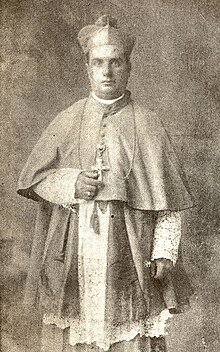
In 1916, the island was declared a subdelegation of the Department of Valparaíso. In the same year, Archbishop Rafael Edwards Salas visited the island and became the main spokesman for the natives' complaints and demands. However, the Chilean State decided to renew the lease to the Company, under the figure of the so-called "Provisional Temperament", distributing additional lands to the natives (5 ha per marriage as of 1926), allocating lands for the Chilean administration and establishing the permanent presence of the Navy, which in 1936 established a regulation according to which, with prior permission, the natives could leave Hanga Roa to fish or provide themselves with fuel.[51][53]
Monsignor Rafael Edwards sought to have the island declared a "naval jurisdiction" in order to intervene in it as military vicar and in this way support the Rapa Nui community, creating better living conditions.[51]
In 1933, the Chilean State Defense Council required the registration of the island in the name of the State in order to protect it from private individuals who wanted to register it in their own name.[51]
Until the 1960s the Rapanui were confined to Hanga Roa. The rest of the island was rented to the Williamson-Balfour Company as a sheep farm until 1953 when President Carlos Ibáñez del Campo cancelled the company's contract for non-compliance and then assigned the entire administration of the island to the Chilean Navy.[54]The island was then managed by the Chilean Navy until 1966, at which point the island was reopened in its entirety. The Rapanui were given Chilean citizenship that year with the Pascua Law enacted during the government of Eduardo Frei Montalva.[55]: 112 Only Spanish was taught in the schools until that year. The Law also created the Isla de Pascua commune depending from the Valparaíso Province and implemented the Civil Registry, created the positions of governor, mayor and councilman, as well as the 6th Police Station of Carabineros de Chile, the first fire company of Easter Island, schools and a hospital. The first mayor was sworn in 1966 and was Alfonso Rapu who sent a letter to President Frei two years prior influencing him to create the Pascua Law.
Islanders were only able to travel off the island easily after the construction of the Mataveri International Airportin 1965, which was built by the Longhi construction company, carrying hundreds of workers, heavy machinery, tents and a field hospital on ships. However, its use did not go beyond airline operations with small groups of tourists. At the same time, a NASA tracking station operated on the island, which ceased operations in 1975.
Between 1965 and 1970, the United States Air Force (USAF) settled on Easter Island, radically changing the way of life of the Rapa Nui, as they became acquainted with the customs of the consumer societies of the developed world.[56][57]
In April 1967 LAN Chile flights began to land and the island began to be oriented towards cultural tourism. Since then, the main concerns for the natives were to strengthen production and marketing cooperatives, which received state support, and to recover their communal lands.

Following the 1973 Chilean coup d'état that brought Augusto Pinochet to power, Easter Island was placed under martial law. Tourism slowed down and private property was restored. During his time in power, Pinochet visited Easter Island on three occasions. The military built a number of new military facilities and a new city hall.[58]
On January 24, 1975, television arrived on the island, with the inauguration of a station of Televisión Nacional de Chile, which broadcast programming on a delayed basis until 1996, when live satellite transmissions to the island began.
In 1976 the Isla de Pascua Province was created with Arnt Arentsen Pettersen appointed as the first governor between 1976 and 1979. Between 1984 and 1990 the administration of Governor Sergio Rapu Haoa stands out and since then all the governors have been Rapanui.
In 1979, Decree Law No. 2885 was enacted to grant individual land titles to regular holders.
On April 1, 1986, Law No. 18,502 is enacted, which establishes the special fuel subsidy in Easter Island, stating that it "may not exceed in each product 3.5 monthly tax units per cubic meter, whose value may be paid directly or through the imputation of the respective amount to the payment of certain taxes".
As a result of an agreement in 1985 between Chile and the United States, the runway at Mataveri International Airport was extended by 423 metres (1,388 ft), reaching 3,353 metres (11,001 ft), and was re-opened in 1987. Pinochet is reported to have refused to attend the opening ceremony in protest against pressures from the United States to address human rights cases.[59]
21st century

Fishers of Rapa Nui have shown their concern of illegal fishing on the island. "Since the year 2000 we started to lose tuna, which is the basis of the fishing on the island, so then we began to take the fish from the shore to feed our families, but in less than two years we depleted all of it", Pakarati said.[60] On 30 July 2007, a constitutional reform gave Easter Island and the Juan Fernández Islands (also known as Robinson Crusoe Island) the status of "special territories" of Chile. Pending the enactment of a special charter, the island continues to be governed as a province of the V Region of Valparaíso.[61]
Species of fish were collected in Easter Island for one month in different habitats including shallow lava pools and deep waters. Within these habitats, two holotypes and paratypes, Antennarius randalli and Antennarius moai, were discovered. These are considered frog-fish because of their characteristics: "12 dorsal rays, last two or three branched; bony part of first dorsal spine slightly shorter than second dorsal spine; body without bold zebra-like markings; caudal peduncle short, but distinct; last pelvic ray divided; pectoral rays 11 or 12".[62]
In 2018, the government decided to limit the stay period for tourists from 90 to 30 days because of social and environmental issues faced by the Island to preserve its historical importance.[63]
A tsunami warning was declared for Easter Island after the 2022 Hunga Tonga–Hunga Ha'apai eruption and tsunami.[64]
Easter Island was closed to tourists from March 17, 2020 until August 4, 2022 due to the COVID-19 pandemic.[65] Then in early October 2022, just two months after the island was reopened to tourists, a forest fire burned nearly 148 acres (60 hectares) of the island, causing irreparable damage to some of the moai.[66] Arson is suspected.[67]
Indigenous rights movement
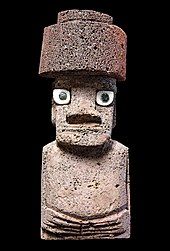
Starting in August 2010, members of the indigenous Hitorangi clan occupied the Hangaroa Eco Village and Spa.[68][69]The occupiers allege that the hotel was bought from the Pinochet government, in violation of a Chilean agreement with the indigenous Rapa Nui, in the 1990s.[70] The occupiers say their ancestors had been cheated into giving up the land.[71] According to a BBC report, on 3 December 2010, at least 25 people were injured when Chilean police using pellet guns attempted to evict from these buildings a group of Rapa Nui who had claimed that the land the buildings stood on had been illegally taken from their ancestors.[72] In 2020 the conflict was settled. The property rights were transferred to the Hitorangi clan while the owners retained the exploitation of the hotel for 15 years.[73]
In January 2011, the UN Special Rapporteur on Indigenous People, James Anaya, expressed concern about the treatment of the indigenous Rapa Nui by the Chilean government, urging Chile to "make every effort to conduct a dialogue in good faith with representatives of the Rapa Nui people to solve, as soon as possible the real underlying problems that explain the current situation".[68] The incident ended in February 2011, when up to 50 armed police broke into the hotel to remove the final five occupiers. They were arrested by the government, and no injuries were reported.[68]
Geography


Easter Island is one of the world's most isolated inhabited islands.[74] Its closest inhabited neighbour is Pitcairn Island, 1,931 km (1,200 mi) to the west, with approximately 50 inhabitants.[75] The nearest continental point lies in central Chile near Concepción, at 3,512 kilometres (2,182 mi). Easter Island's latitude is similar to that of Caldera, Chile, and it lies 3,510 km (2,180 mi) west of continental Chile at its nearest point (between Lota and Lebu in the Biobío Region). Isla Salas y Gómez, 415 km (258 mi) to the east, is closer but is uninhabited. The Tristan da Cunha archipelago in the southern Atlantic competes for the title of the most remote island, lying 2,430 km (1,510 mi) from Saint Helena island and 2,816 km (1,750 mi) from the South African coast.
The island is about 24.6 km (15.3 mi) long by 12.3 km (7.6 mi) at its widest point; its overall shape is triangular. It has an area of 163.6 km2 (63.2 sq mi), and a maximum elevation of 507 m (1,663 ft) above mean sea level. There are three Rano (freshwater crater lakes), at Rano Kau, Rano Raraku and Rano Aroi, near the summit of Terevaka, but no permanent streams or rivers.
Geology

Easter Island is a volcanic island, consisting mainly of three extinct coalesced volcanoes: Terevaka (altitude 507 metres) forms the bulk of the island, while two other volcanoes, Poike and Rano Kau, form the eastern and southern headlands and give the island its roughly triangular shape. Lesser cones and other volcanic features include the crater Rano Raraku, the cinder cone Puna Pau and many volcanic caves including lava tubes.[76]Poike used to be a separate island until volcanic material from Terevaka united it to the larger whole. The island is dominated by hawaiite and basalt flows which are rich in iron and show affinity with igneous rocks found in the Galápagos Islands.[77]

Easter Island and surrounding islets, such as Motu Nui and Motu Iti, form the summit of a large volcanic mountain rising over 2,000 m (6,600 ft) from the sea bed. The mountain is part of the Salas y Gómez Ridge, a (mostly submarine) mountain range with dozens of seamounts, formed by the Easter hotspot. The range begins with Pukao and next Moai, two seamounts to the west of Easter Island, and extends 2,700 km (1,700 mi) east to the Nazca Ridge. The ridge was formed by the Nazca Plate moving over the Easter hotspot.[79]
Located about 350 km (220 mi) east of the East Pacific Rise, Easter Island lies within the Nazca Plate, bordering the Easter Microplate. The Nazca-Pacific relative plate movement due to the seafloor spreading, amounts to about 150 mm (5.9 in) per year. This movement over the Easter hotspot has resulted in the Easter Seamount Chain, which merges into the Nazca Ridge further to the east. Easter Island and Isla Salas y Gómez are surface representations of that chain. The chain has progressively younger ages to the west. The current hotspot location is speculated to be west of Easter Island, amidst the Ahu, Umu and Tupa submarine volcanic fields and the Pukao and Moai seamounts.[80]
Easter Island lies atop the Rano Kau Ridge, and consists of three shield volcanoes with parallel geologic histories. Poike and Rano Kau exist on the east and south slopes of Terevaka, respectively. Rano Kau developed between 0.78 and 0.46 Ma from tholeiitic to alkalic basalts. This volcano possesses a clearly defined summit caldera. Benmoreitic lavas extruded about the rim from 0.35 to 0.34 Ma. Finally, between 0.24 and 0.11 Ma, a 6.5 km (4.0 mi) fissuredeveloped along a NE–SW trend, forming monogenetic vents and rhyolitic intrusions. These include the cryptodome islets of Motu Nui and Motu Iti, the islet of Motu Kao Kao, the sheet intrusion of Te Kari Kari, the perlitic obsidian Te Manavai dome and the Maunga Orito dome.[80]
Poike formed from tholeiitic to alkali basalts from 0.78 to 0.41 Ma. Its summit collapsed into a caldera which was subsequently filled by the Puakatiki lava cone pahoehoe flows at 0.36 Ma. Finally, the trachytic lava domes of Maunga Vai a Heva, Maunga Tea Tea, and Maunga Parehe formed along a NE-SW trending fissure.[80]
Terevaka formed around 0.77 Ma of tholeiitic to alkali basalts, followed by the collapse of its summit into a caldera. Then at about 0.3Ma, cinder cones formed along a NNE-SSW trend on the western rim, while porphyritic benmoreitic lava filled the caldera, and pahoehoe flowed towards the northern coast, forming lava tubes, and to the southeast. Lava domes and a vent complex formed in the Maunga Puka area, while breccias formed along the vents on the western portion of Rano Aroi crater. This volcano's southern and southeastern flanks are composed of younger flows consisting of basalt, alkali basalt, hawaiite, mugearite, and benmoreite from eruptive fissures starting at 0.24 Ma. The youngest lava flow, Roiho, is dated at 0.11 Ma. The Hanga O Teo embayment is interpreted to be a 200 m high landslide scarp.[80]
Rano Raraku and Maunga Toa Toa are isolated tuff cones of about 0.21 Ma. The crater of Rano Raraku contains a freshwater lake. The stratified tuff is composed of sideromelane, slightly altered to palagonite, and somewhat lithified. The tuff contains lithic fragments of older lava flows. The northwest sector of Rano Raraku contains reddish volcanic ash.[80] According to Bandy, "...all of the great images of Easter Island are carved from" the light and porous tuff from Rano Raraku. A carving was abandoned when a large, dense and hard lithic fragment was encountered. However, these lithics became the basis for stone hammers and chisels. The Puna Pau crater contains an extremely porous pumice, from which was carved the Pukao "hats". The Maunga Orito obsidian was used to make the "mataa" spearheads.[81]
In the first half of the 20th century, steam reportedly came out of the Rano Kau crater wall. This was photographed by the island's manager, Mr. Edmunds.[82]
The ancient Easter Island residents captured fresh groundwater where it seeped into the sea.[83][84][85][86][87]
Climate
Under the Köppen climate classification, the climate of Easter Island is classified as a tropical rainforest climate (Af) that borders on a humid subtropical climate (Cfa).[88] The lowest temperatures are recorded in July and August (minimum 15 °C or 59 °F) and the highest in February (maximum temperature 28 °C or 82.4 °F[89]), the summer season in the southern hemisphere. Winters are relatively mild. The rainiest month is May, though the island experiences year-round rainfall.[90] Easter Island's isolated location exposes it to winds which help to keep the temperature fairly cool. Precipitation averages 1,118 millimetres or 44 inches per year. Occasionally, heavy rainfall and rainstorms strike the island. These occur mostly in the winter months (June–August). Since it is close to the South Pacific High and outside the range of the intertropical convergence zone, cyclones and hurricanes do not occur around Easter Island.[91] There is significant temperature moderation due to its isolated position in the middle of the ocean.
| Climate data for Easter Island (Mataveri International Airport) 1991–2020, extremes 1912–present | |||||||||||||
|---|---|---|---|---|---|---|---|---|---|---|---|---|---|
| Month | Jan | Feb | Mar | Apr | May | Jun | Jul | Aug | Sep | Oct | Nov | Dec | Year |
| Record high °C (°F) | 32.0 (89.6) | 31.0 (87.8) | 32.0 (89.6) | 31.0 (87.8) | 30.0 (86.0) | 29.0 (84.2) | 31.0 (87.8) | 28.3 (82.9) | 30.0 (86.0) | 29.0 (84.2) | 33.0 (91.4) | 34.0 (93.2) | 34.0 (93.2) |
| Mean daily maximum °C (°F) | 26.9 (80.4) | 27.5 (81.5) | 26.9 (80.4) | 25.5 (77.9) | 23.4 (74.1) | 21.9 (71.4) | 21.3 (70.3) | 21.2 (70.2) | 21.5 (70.7) | 22.5 (72.5) | 23.8 (74.8) | 25.5 (77.9) | 24.0 (75.2) |
| Daily mean °C (°F) | 23.5 (74.3) | 24.0 (75.2) | 23.6 (74.5) | 22.4 (72.3) | 20.5 (68.9) | 19.3 (66.7) | 18.6 (65.5) | 18.5 (65.3) | 18.7 (65.7) | 19.3 (66.7) | 20.6 (69.1) | 22.1 (71.8) | 20.9 (69.6) |
| Mean daily minimum °C (°F) | 20.0 (68.0) | 20.6 (69.1) | 20.2 (68.4) | 19.4 (66.9) | 17.7 (63.9) | 16.7 (62.1) | 15.9 (60.6) | 15.7 (60.3) | 15.8 (60.4) | 16.2 (61.2) | 17.5 (63.5) | 18.7 (65.7) | 17.9 (64.2) |
| Record low °C (°F) | 12.0 (53.6) | 14.0 (57.2) | 8.2 (46.8) | 12.2 (54.0) | 10.0 (50.0) | 6.1 (43.0) | 7.2 (45.0) | 7.0 (44.6) | 8.0 (46.4) | 8.0 (46.4) | 8.0 (46.4) | 9.7 (49.5) | 7.0 (44.6) |
| Average rainfall mm (inches) | 81.3 (3.20) | 69.3 (2.73) | 86.9 (3.42) | 123.0 (4.84) | 116.9 (4.60) | 109.2 (4.30) | 113.1 (4.45) | 97.1 (3.82) | 97.3 (3.83) | 90.9 (3.58) | 75.2 (2.96) | 69.6 (2.74) | 1,129.8 (44.48) |
| Average rainy days (≥ 1.0 mm) | 10.1 | 9.6 | 10.7 | 11.6 | 12.0 | 12.3 | 11.6 | 10.6 | 10.2 | 9.3 | 9.4 | 9.0 | 126.4 |
| Average relative humidity (%) | 77 | 79 | 79 | 81 | 81 | 81 | 80 | 80 | 79 | 77 | 77 | 78 | 79 |
| Mean monthly sunshine hours | 271.7 | 255.6 | 238.7 | 199.9 | 175.9 | 148.3 | 162.4 | 177.2 | 180.3 | 213.6 | 219.9 | 251.0 | 2,494.5 |
| Source 1: Dirección Meteorológica de Chile (extremes 1954–present)[92][93] | |||||||||||||
| Source 2: NOAA (precipitation days 1991–2020),[94] Deutscher Wetterdienst (extremes 1912–1990 and humidity)[95] | |||||||||||||
Ecology
Easter Island, together with its closest neighbour, the tiny island of Isla Salas y Gómez 415 km (258 mi) farther east, is recognized by ecologists as a distinct ecoregion, the Rapa Nui subtropical broadleaf forests. The original subtropical moist broadleaf forests are now gone, but paleobotanical studies of fossil pollen, tree moulds left by lava flows, and root casts found in local soils indicate that the island was formerly forested, with a range of trees, shrubs, ferns, and grasses. A large extinct palm, Paschalococos disperta, related to the Chilean wine palm (Jubaea chilensis), was one of the dominant trees as attested by fossil evidence. Like its Chilean counterpart it probably took close to 100 years to reach adult height. The Polynesian rat, which the original settlers brought with them, played a very important role in the disappearance of the Rapa Nui palm. Although some may believe that rats played a major role in the degradation of the forest, less than 10% of palm nuts show teeth marks from rats. The remains of palm stumps in different places indicate that humans caused the trees to fall because in large areas, the stumps were cut efficiently.[96]
The loss the palms to make the settlements led to their extinction almost 350 years ago.[97] The toromiro tree (Sophora toromiro) was prehistorically present on Easter Island, but is now extinct in the wild. However, the Royal Botanic Gardens, Kew and the Göteborg Botanical Garden are jointly leading a scientific program to reintroduce the toromiro to Easter Island. With the palm and the toromiro virtually gone, there was considerably less rainfall as a result of less condensation. After the island was used to feed thousands of sheep for almost a century, by the mid-1900s the island was mostly covered in grassland with nga'atu or bulrush (Schoenoplectus californicus tatora) in the crater lakes of Rano Raraku and Rano Kau. The presence of these reeds, which are called totora in the Andes, was used to support the argument of a South American origin of the statue builders, but pollen analysis of lake sediments shows these reeds have grown on the island for over 30,000 years.[citation needed] Before the arrival of humans, Easter Island had vast seabirdcolonies containing probably over 30 resident species, perhaps the world's richest.[98] Such colonies are no longer found on the main island. Fossilevidence indicates six species of land birds (two rails, two parrots, one owl, and one heron), all of which have become extinct.[99] Five introduced species of land bird are known to have breeding populations (see List of birds of Easter Island).
Lack of studies results in poor understanding of the oceanic fauna of Easter Island and waters in its vicinity; however, possibilities of undiscovered breeding grounds for humpback, southern blue and pygmy blue whales including Easter Island and Isla Salas y Gómez have been considered.[100]Potential breeding areas for fin whales have been detected off northeast of the island as well.[101]
- Vegetation on the island
The immunosuppressant drug sirolimus was first discovered in the bacterium Streptomyces hygroscopicus in a soil sample from Easter Island. The drug is also known as rapamycin, after Rapa Nui.[102] It is now being studied for extending longevity in mice.[103]
Trees are sparse, rarely forming natural groves, and it has been argued whether native Easter Islanders deforested the island in the process of erecting their statues,[104] and in providing sustenance for an overconsumption of natural resources from a overcrowded island.[citation needed] Experimental archaeology demonstrated that some statues certainly could have been placed on Y-shaped wooden frames called miro manga erua and then pulled to their final destinations on ceremonial sites.[104] Other theories involve the use of "ladders" (parallel wooden rails) over which the statues could have been dragged.[105] Rapa Nui traditions metaphorically refer to spiritual power (mana) as the means by which the moai were "walked" from the quarry. Recent experimental recreations have proven that it is fully possible that the moai were literally walked from their quarries to their final positions by use of ropes, casting doubt on the role that their existence plays in the environmental collapse of the island.[106]
Given the island's southern latitude, the climatic effects of the Little Ice Age (about 1650 to 1850) may have exacerbated deforestation, although this remains speculative.[104] Many researchers[107] point to the climatic downtrend caused by the Little Ice Age as a contributing factor to resource stress and to the palm tree's disappearance. Experts, however, do not agree on when the island's palms became extinct.
Jared Diamond dismisses past climate change as a dominant cause of the island's deforestation in his book Collapse which assesses the collapse of the ancient Easter Islanders.[108] Influenced by Heyerdahl's romantic interpretation of Easter's history, Diamond insists that the disappearance of the island's trees seems to coincide with a decline of its civilization around the 17th and 18th centuries, alongside declines of fish bones in middens (suggesting a decline in fishing) and then declines in bird bones, which he attributes to habitat loss. He notes that they stopped making statues at that time and started destroying the ahu. But the link is weakened because the Bird Man cult continued to thrive and survived the great impact caused by the arrival of explorers, whalers, sandalwood traders, and slave raiders.
Benny Peiser[5] noted evidence of self-sufficiency when Europeans first arrived. The island still had smaller trees, mainly toromiro, which became extinct in the wild in the 20th century probably because of slow growth and changes in the island's ecosystem. Cornelis Bouman, Jakob Roggeveen's captain, stated in his logbook, "... of yams, bananas and small coconut palms we saw little and no other trees or crops." According to Carl Friedrich Behrens, Roggeveen's officer, "The natives presented palm branches as peace offerings." According to ethnographer Alfred Mètraux, the most common type of house was called "hare paenga" (and is known today as "boathouse") because the roof resembled an overturned boat. The foundations of the houses were made of buried basalt slabs with holes for wooden beams to connect with each other throughout the width of the house. These were then covered with a layer of totora reed, followed by a layer of woven sugarcane leaves, and lastly a layer of woven grass.
Peiser claims that these reports indicate that large trees existed at that time, which is perhaps contradicted by the Bouman quote above. Plantations were often located farther inland, next to foothills, inside open-ceiling lava tubes, and in other places protected from the strong salt winds and salt spray affecting areas closer to the coast. It is possible many of the Europeans did not venture inland. The statue quarry, only one kilometre (5⁄8 mile) from the coast with an impressive cliff 100 m (330 ft) high, was not explored by Europeans until well into the 19th century.
Easter Island has suffered from heavy soil erosion in recent centuries, aggravated by massive historic deforestation alongside modern sheep farmingthroughout most of the 20th century. Jakob Roggeveen reported that Easter Island was exceptionally fertile. "Fowls are the only animals they keep. They cultivate bananas, sugar cane, and above all sweet potatoes." In 1786 Jean-François de La Pérouse visited Easter Island and his gardener declared that "three days' work a year" would be enough to support the population. Rollin, a major in the Pérouse expedition, wrote, "Instead of meeting with men exhausted by famine... I found, on the contrary, a considerable population, with more beauty and grace than I afterwards met in any other island; and a soil, which, with very little labor, furnished excellent provisions, and in an abundance more than sufficient for the consumption of the inhabitants."[110] The islanders' innovation of lithic mulching - the practice of covering fields with gravel or rocks to trap moisture and improve soil fertility - is a well-known and effective practice in dry areas of the premodern world.[111]
According to Diamond, the oral traditions (the veracity of which has been questioned by Routledge, Lavachery, Mètraux, Peiser, and others) of the current islanders seem obsessed with cannibalism, which he offers as evidence supporting a rapid collapse. For example, he states, to severely insult an enemy one would say, "The flesh of your mother sticks between my teeth." This, Diamond asserts, means the food supply of the people ultimately ran out.[112] Cannibalism, however, was widespread across Polynesian cultures.[113] Human bones have not been found in earth ovens other than those behind the religious platforms, indicating that cannibalism in Easter Island was a ritualistic practice. Contemporary ethnographic research has proven there is scarcely any tangible evidence for widespread cannibalism anywhere and at any time on the island.[114] The first scientific exploration of Easter Island (1914) recorded that the indigenous population strongly rejected allegations that they or their ancestors had been cannibals.[36]
Culture

Mythology
The most important myths are:[citation needed]
- Tangata manu, the Birdman cult which was practised until the 1860s.
- Makemake, an important god.
- Aku-aku, the guardians of the sacred family caves.
- Moai-kava-kava a ghost man of the Hanau epe (long-ears.)
- Hekai ite umu pare haonga takapu Hanau epe kai noruego, the sacred chant to appease the aku-aku before entering a family cave.
Stone work
The Rapa Nui people had a Stone Age culture and made extensive use of local stone:
- Basalt, a hard, dense stone used for toki and at least one of the moai.
- Obsidian, a volcanic glass with sharp edges used for sharp-edged implements such as Mataa and for the black pupils of the eyes of the moai.
- Red scoria from Puna Pau, a very light red stone used for the pukao and a few moai.
- Tuff from Rano Raraku, a much more easily worked rock than basalt that was used for most of the moai.
Moai (statues)
The large stone statues, or moai, for which Easter Island is famous, were carved in the period 1100–1680 CE (rectified radio-carbon dates).[18] A total of 887 monolithic stone statues have been inventoried on the island and in museum collections.[115] Although often identified as "Easter Island heads", the statues have torsos, most of them ending at the top of the thighs; a small number are complete figures that kneel on bent knees with their hands over their stomachs.[116][117] Some upright moai have become buried up to their necks by shifting soils.
Almost all (95%)[citation needed] moai were carved from compressed, easily worked solidified volcanic ash or tuff, found at a single site on the side of the extinct volcano Rano Raraku. The native islanders who carved them used only stone hand chisels, mainly basalt toki, which lie in place all over the quarry. The stone chisels were sharpened by chipping off a new edge when dulled. While sculpting was going on, the volcanic stone was splashed with water to soften it. While many teams worked on different statues at the same time, a single moai took a team of five or six men approximately a year to complete. Each statue represented the deceased head of a lineage.[citation needed]
Only a quarter of the statues were installed. Nearly half remained in the quarry at Rano Raraku, and the rest sat elsewhere, presumably on their way to intended locations. The largest moai raised on a platform is known as "Paro". It weighs 82 tonnes (90 short tons) and is 9.89 m (32 ft 5 in) long.[118][119]Several other statues of similar weight were transported to ahu on the north and south coasts.
Possible means by which the statues were moved include employment of a miro manga erua, a Y-shaped sledge with cross pieces, pulled with ropes made from the tough bark of the hau tree[120] and tied around the statue's neck. Anywhere from 180 to 250 men were required for pulling, depending on the size of the moai. Among other researchers on moving and erecting the moai was Vince Lee, who reenacted a moai moving scenario. Some 50 of the statues were re-erected in modern times. One of the first was on Ahu Ature Huke in Anakena beach in 1956.[121] It was raised using traditional methods during a Heyerdahl expedition.
Another method that might have been used to transport the moai would be to attach ropes to the statue and rock it, tugging it forward as it rocked. This would fit the legend of the Mo'ai 'walking' to their final locations.[122][123][124] This might have been managed by as few as 15 people, supported by the following evidence:
- The heads of the moai in the quarry are sloped forward, whereas the ones moved to final locations are not. This would serve to provide a better centre of gravity for transport.
- The statues found along the transport roads have wider bases than statues installed on ahu; this would facilitate more stable transport. Studies have shown fractures along the bases of the statues in transport; these could have arisen from rocking the statue back and forth and placing great pressures on the edges. The statues found mounted on ahu do not have wide bases, and stone chips found at the sites suggest they were further modified on placement.
- The abandoned and fallen statues near the old roads are found (more often than would be expected from chance) face down on ascending grades and on their backs when headed uphill. Some were documented standing upright along the old roads, e.g., by a party from Captain Cook's voyage that rested in the shade of a standing statue. This would be consistent with upright transport.
There is debate regarding the effects of the monument creation process on the environment. Some believe that the process of creating the moai caused widespread deforestation and ultimately a civil war over scarce resources.[125]
In 2011, a large moai statue was excavated from the ground.[126] During the same excavation program, some larger moai were found to have complex dorsal petroglyphs, revealed by deep excavation of the torso.[127]
In 2020, a pickup truck crashed into and destroyed a moai statue due to brake failure. No one was injured in the incident.[128][129]
- Moais
Ahu (stone platforms)

Ahu are stone platforms. Varying greatly in layout, many were reworked during or after the huri mo'ai or statue-toppling era; many became ossuaries, one was dynamited open, and Ahu Tongariki was swept inland by a tsunami. Of the 313 known ahu, 125 carried moai – usually just one, probably because of the shortness of the moai period and transportation difficulties. Ahu Tongariki, one km (0.62 mi) from Rano Raraku, had the most and tallest moai, 15 in total.[130] Other notable ahu with moai are Ahu Akivi, restored in 1960 by William Mulloy, Nau Nau at Anakena and Tahai. Some moai may have been made from wood and were lost.
The classic elements of ahu design are:
- A retaining rear wall several feet high, usually facing the sea
- A front wall made of rectangular basalt slabs called paenga
- A fascia made of red scoria that went over the front wall (platforms built after 1300)
- A sloping ramp in the inland part of the platform, extending outward like wings
- A pavement of even-sized, round water-worn stones called poro
- An alignment of stones before the ramp
- A paved plaza before the ahu. This was called marae
- Inside the ahu was a fill of rubble.
On top of many ahu would have been:
- Moai on squarish "pedestals" looking inland, the ramp with the poro before them.
- Pukao or Hau Hiti Rau on the moai heads (platforms built after 1300).
- When a ceremony took place, "eyes" were placed on the statues. The whites of the eyes were made of coral, the iris was made of obsidian or red scoria.
Ahu evolved from the traditional Polynesian marae. In this context, ahu referred to a small structure sometimes covered with a thatched roof where sacred objects, including statues, were stored. The ahu were usually adjacent to the marae or main central court where ceremonies took place, though on Easter Island, ahu and moai evolved to much greater size. There the marae is the unpaved plaza before the ahu. The biggest ahu is 220 m (720 ft) and holds 15 statues, some of which are 9 m (30 ft) high. The filling of an ahu was sourced locally (apart from broken, old moai, fragments of which have been used in the fill).[109] Individual stones are mostly far smaller than the moai, so less work was needed to transport the raw material, but artificially leveling the terrain for the plaza and filling the ahu was laborious.
Ahu are found mostly on the coast, where they are distributed densely and fairly evenly. The exceptions are the western slopes of Mount Terevaka and the Rano Kau and Poike headlands, where they are much sparser. These are the three areas with the least low-lying coastal land and, apart from Poike, the furthest areas from Rano Raraku. One ahu with several moai was recorded on the cliffs at Rano Kau in the 1880s but had fallen to the beach before the Routledge expedition.[36] At least three recorded on Poike in the 1930s have also since disappeared.[131][132]
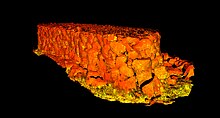
Stone walls
One of the highest-quality examples of Easter Island stone masonry is the rear wall of the ahu at Vinapu. Made without mortar by shaping hard basalt rocks of up to 7,000 kg (6.9 long tons; 7.7 short tons) to match each other exactly, it has a superficial similarity to some Inca stone walls in South America.[133]
Stone houses
Two types of houses are known from the past: hare paenga, a house with an elliptical foundation, made with basalt slabs and covered with a thatched roof that resembled an overturned boat, and hare oka, a round stone structure. Related stone structures called Tupa look very similar to the hare oka, except that the Tupa were inhabited by astronomer-priests and located near the coast, where the movements of the stars could be easily observed. Settlements also contain hare moa ("chicken house"), oblong stone structures that housed chickens. The houses at the ceremonial village of Orongo are unique in that they are shaped like hare paenga but are made entirely of flat basalt slabs found inside Rano Kao crater. The entrances to all the houses are very low, and entry requires crawling.
In early times the people of Rapa Nui reportedly sent the dead out to sea in small funerary canoes, as did their Polynesian counterparts on other islands. They later started burying people in secret caves to save the bones from desecration by enemies. During the turmoil of the late 18th century, the islanders seem to have started to bury their dead in the space between the belly of a fallen moai and the front wall of the structure. During the time of the epidemics they made mass graves that were semi-pyramidal stone structures.
Petroglyphs
Easter Island has one of the richest collections of petroglyphs in all Polynesia. Around 1,000 sites with more than 4,000 petroglyphs are catalogued. Designs and images were carved out of rock for a variety of reasons: to create totems, to mark territory, or to memorialize a person or event. There are distinct variations around the island in the frequency of themes among petroglyphs, with a concentration of Birdmen at Orongo. Other subjects include sea turtles, Komari (vulvas) and Makemake, the chief god of the Tangata manu or Birdman cult.[134]
- Petroglyphs
Caves
The island[135] and neighbouring Motu Nui are riddled with caves, many of which show signs of past human use for planting and as fortifications, including narrowed entrances and crawl spaces with ambush points. Many caves feature in the myths and legends of the Rapa Nui.[136]
Other stones
The Pu o Hiro or Hiro's Trumpet is a stone on the north coast of Easter Island. It was once a musical instrument used in fertility rituals.[137][138][139]

Rongorongo
Easter Island once had an apparent script called rongorongo. Glyphs include pictographic and geometric shapes; the texts were incised in wood in reverse boustrophedon direction. It was first reported by French missionary Eugène Eyraudin 1864. At that time, several islanders said they could understand the writing, but according to tradition, only ruling families and priests were ever literate, and none survived the slave raids and subsequent epidemics. Despite numerous attempts, the surviving texts have not been deciphered, and without decipherment it is not certain that they are actually writing. Part of the problem is the small amount that has survived: only two dozen texts, none of which remain on the island. There are also only a couple of similarities with the petroglyphs on the island.[140]
Wood carving
 | 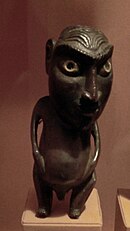 |
| Skeletal statuette | Atypical portly statuette |
Wood was scarce on Easter Island during the 18th and 19th centuries, but a number of highly detailed and distinctive carvings have found their way to the world's museums. Particular forms include:[141]

- Reimiro, a gorget or breast ornament of crescent shape with a head at one or both tips.[142] The same design appears on the flag of Rapa Nui. Two Rei Miru at the British Museum are inscribed with Rongorongo.
- Moko Miro, a man with a lizard head. The Moko Miro was used as a club because of the legs, which formed a handle shape. If it was not held by hand, dancers wore it around their necks during feasts. The Moko Miro would also be placed at the doorway to protect the household from harm. It would be hanging from the roof or set in the ground. The original form had eyes made from white shells, and the pupils were made of obsidian.[143]
- Moai kavakava are male carvings and the Moai Paepae are female carvings.[144] These grotesque and highly detailed human figures carved from Toromiro pine, represent ancestors. Sometimes these statues were used for fertility rites. Usually, they are used for harvest celebrations; "the first picking of fruits was heaped around them as offerings". When the statues were not used, they would be wrapped in bark cloth and kept at home. There were a few times that are reported when the islanders would pick up the figures like dolls and dance with them.[144] The earlier figures are rare and generally depict a male figure with an emaciated body and a goatee. The figures' ribs and vertebrae are exposed and many examples show carved glyphs on various parts of the body but more specifically, on the top of the head. The female figures, rarer than the males, depict the body as flat and often with the female's hand lying across the body. The figures, although some were quite large, were worn as ornamental pieces around a tribesman's neck. The more figures worn, the more important the man. The figures have a shiny patina developed from constant handling and contact with human skin.[citation needed]
- Ao, a large dancing paddle
21st-century culture
The Rapanui sponsor an annual festival, the Tapati, held since 1975 around the beginning of February to celebrate Rapa Nui culture. The islanders also maintain a national football team and three discos in the town of Hanga Roa. Other cultural activities include a musical tradition that combines South American and Polynesian influences and woodcarving.
Sports
The Chilean leg of the Red Bull Cliff Diving World Series takes place on the Island of Rapa Nui.
Tapati Festival
Tapati Rapa Nui festival ("week festival" in the local language) is an annual two-week long festival celebrating Easter Island culture.[145] The Tapati is centered around a competition between two families/ clans competing in various competitions to earn points. The winning team has their candidate crowned 'queen' of the island for the next year. The competitions are a way to maintain and celebrate traditional cultural activities such as cooking, jewelry-making, woodcarving, and canoeing.[146]
Demographics
2012 census
Population at the 2012 census was 5,761 (increased from 3,791 in 2002).[147] In 2002, 60% were persons of indigenous Rapa Nui origin, 39% were mainland Chileans (or their Easter Island-born descendants) of European (mostly Spanish) or mestizo (mixed European and indigenous Chilean Amerindian) origin and Easter Island-born mestizos of European and Rapa Nui and/or native Chilean descent, and the remaining 1% were indigenous mainland Chilean Amerindians (or their Easter Island-born descendants).[148] As of 2012, the population density on Easter Island was 35/km2 (91/sq mi).
Demographic history
The 1982 population was 1,936. The increase in population in the last census was partly caused by the arrival of people of European or mixed European and Native American descent from the Chilean mainland. However, most married a Rapa Nui spouse. Around 70% of the population were natives. Estimates of the pre-European population range from 7–17,000. Easter Island's all-time low of 111 inhabitants was reported in 1877. Out of these 111 Rapa Nui, only 36 had descendants, and all of today's Rapa Nui claim descent from those 36.
Languages
Easter Island's traditional language is Rapa Nui, an Eastern Polynesian language, sharing some similarities with Hawaiian and Tahitian. However, as in the rest of mainland Chile, the official language used is Spanish. Easter Island is the only territory in Polynesia where Spanish is an official language.
It is supposed[149] that the 2,700 indigenous Rapa Nui living in the island have a certain degree of knowledge of their traditional language; however, census data does not exist on the primary known and spoken languages among Easter Island's inhabitants and there are recent claims that the number of fluent speakers is as low as 800.[150] Indeed, Rapa Nui has been declining in its number of speakers as the island undergoes Hispanicization, because the island is under the jurisdiction of Chile and is now home to a number of Chilean continentals, most of whom speak only Spanish. For this reason, most Rapa Nui children now grow up speaking Spanish, and those who do learn Rapa Nui begin learning it later in life.[151] Even with efforts to revitalize the language,[152] Ethnologue has established that Rapa Nui is currently a threatened language.[149]
Easter Island's indigenous Rapa Nui toponymy has survived with few Spanish additions or replacements, a fact that has been attributed in part to the survival of the Rapa Nui language.[153]
Administration and legal status
Easter Island shares with Juan Fernández Islands the constitutional status of "special territory" of Chile, granted in 2007. As of 2011 a special charter for the island was under discussion in the Chilean Congress.
Administratively, the island is a province (Isla de Pascua Province) of the Valparaíso Region and contains a single commune (comuna) (Isla de Pascua). Both the province and the commune are called Isla de Pascua and encompass the whole island and its surrounding islets and rocks, plus Isla Salas y Gómez, some 380 km (240 mi) to the east. The provincial governor is appointed by the President of the Republic.[154] The municipal administration is located in Hanga Roa, led by a mayor and a six-member municipal council, all directly elected for a four-year mandate.
In August 2018, a law took effect prohibiting non-residents from staying on the island for more than 30 days.[155]
Since 1966 rape, sexual abuse and crimes against property in Easter Island had lower sentences than corresponding offences in mainland Chile.[156]This law was repealled in 2021 by a Constitutional Court decree.[157]
Notable people

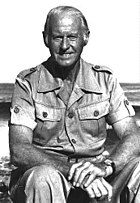

- Policarpo Toro (1856-1921), a Chilean naval officer, took possession of the island on behalf of Chile.
- Monsignor Rafael Edwards Salas, (1978-1938), a Chilean priest, professor, and bishop who served as the military vicar of Chile and specially in the island.
- Felipe González de Ahedo (1714–1802), a Spanish navigator and cartographer; annexed Easter Island in 1770.
- Angata (c. 1853–1914), native catechist and prophetess who led a 1914 rebellion
- Thomas Barthel (1923–1997) a German ethnologist and epigrapher
- Carmen Cardinali (born 1944) a Rapa Nui Chilean professor, governor of Easter Island, 2010-2014.
- Jean-Baptiste Dutrou-Bornier (1834–1876) a French mariner, removed many of the Rapa Nui people and turned the island into a sheep ranch.
- Sebastian Englert (1888–1969), missionary and ethnologist
- Eugène Eyraud (1820–1868), missionary
- Thor Heyerdahl (1914–2002), a Norwegian adventurer and ethnographer
- Melania Hotu (born 1959), governor (2006–2010, 2015–2018)
- Marta Hotus Tuki (born 1969), governor (2014–2015)
- Riro Kāinga (died 1898 or 1899), last person to hold title of king and rule before Chilean consolidation
- Kings of Easter Island
- Hotu Matuꞌa, island founder
- William Mulloy (1917–1978), an American anthropologist and archaeologist
- Nga'ara (died 1859), one of the last 'ariki
- Jacobo Hey Paoa, first Rapa Nui male to earn a law degree and become an attorney
- Juan Edmunds Rapahango (1923–2012), former mayor
- Pedro Edmunds Paoa (born 1961), mayor and former governor
- Laura Alarcón Rapu, governor from 2018 to 2022
- Tiare Aguilera Hey, member of the Chilean Constitutional Convention
- Hippolyte Roussel (1824–1898), a French priest and missionary
- Katherine Routledge (1866–1935), an English archaeologist and anthropologist
- Alexander Ariʻipaea Salmon (1855–1914) English-Jewish-Tahitian de facto ruler of Easter Island, 1878-1888.
- Mahani Teave (born 1983), a Chilean American classical pianist
- Atamu Tekena (c. 1850–1892), missionary installed King who ceded island to Chile
- José Fati Tepano, first Rapa Nui male to serve as a titular judge upon completing training in Chile
- Juan Tepano (1867–1947), indigenous leader and cultural informant
- Valentino Riroroko Tuki (1932–2017) last claimant to the Rapa Nui throne
- Lynn Rapu Tuki (born 1969), head-teacher, promotes the arts and traditions of the Rapa Nui People.
- Luz Zasso Paoa a Rapa Nui politician, mayor of Easter Island, 2008-2012.
Transportation
Easter Island is served by Mataveri International Airport, with jet service (currently Boeing 787s) from LATAM Chile and, seasonally, subsidiaries such as LATAM Perú.





![{\displaystyle \operatorname {MSE} (T)=E[(T-\theta )^{2}]}](https://wikimedia.org/api/rest_v1/media/math/render/svg/ba0fa50239427e73a435244a58b28e3596099390)
![{\displaystyle {\begin{aligned}\operatorname {MSE} (T)&=\operatorname {E} [(T-\theta )^{2}]=\operatorname {E} [(T-\operatorname {E} [T]+\operatorname {E} [T]-\theta )^{2}]\\[5pt]&=\operatorname {E} [(T-\operatorname {E} [T])^{2}]+2E[T-E[T]](\operatorname {E} [T]-\theta )+(\operatorname {E} [T]-\theta )^{2}\\[5pt]&=\operatorname {var} (T)+(\operatorname {E} [T]-\theta )^{2}\end{aligned}}}](https://wikimedia.org/api/rest_v1/media/math/render/svg/df45d4c039ab576a6b5d819378eb7add75dc72e5)


![{\displaystyle \operatorname {E} [T]=\theta }](https://wikimedia.org/api/rest_v1/media/math/render/svg/149385e4baa32fa775b5c66a9e1da1fa794fa2e2)

![{\displaystyle (\operatorname {E} [T]-\theta )^{2}}](https://wikimedia.org/api/rest_v1/media/math/render/svg/65c4e45ecaf2b0048f5f6a0a594a9917d604a607)

![{\displaystyle \operatorname {var} [\,T\,]\ \geq \ {\mathcal {I}}_{\theta }^{-1},}](https://wikimedia.org/api/rest_v1/media/math/render/svg/11af66bdfbc739fb0a6ca2a24e5bfd925441f1b9)

















![{\displaystyle \operatorname {E} [(T_{1}-\theta )^{2}]\leq \operatorname {E} [(T_{2}-\theta )^{2}]}](https://wikimedia.org/api/rest_v1/media/math/render/svg/a1a6e3b42a820b3e2375ffc6d628bfeeb106d1fd)
![{\displaystyle e(T_{1},T_{2})={\frac {\operatorname {E} [(T_{2}-\theta )^{2}]}{\operatorname {E} [(T_{1}-\theta )^{2}]}}={\frac {\operatorname {var} (T_{2})}{\operatorname {var} (T_{1})}}}](https://wikimedia.org/api/rest_v1/media/math/render/svg/19ad6436bd499cfa15f02263dbf3084eec9d45f4)

![{\displaystyle \mathrm {E} \left[(T_{1}-\theta )^{2}\right]\leq \mathrm {E} \left[(T_{2}-\theta )^{2}\right]}](https://wikimedia.org/api/rest_v1/media/math/render/svg/3783f48ff4b902eac8e828df3af42ac9ddda0757)




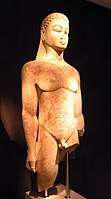





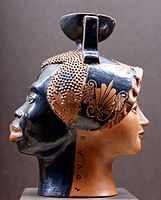

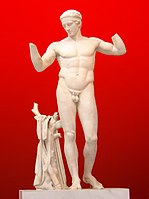

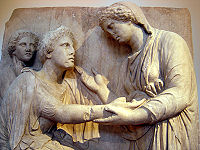




![Athenian cavalryman Dexileos fighting a naked hoplite in the Corinthian War.[14] Dexileos was killed in action near Corinth in the summer of 394 BC, probably in the Battle of Nemea,[14] or in a proximate engagement.[15] Grave Stele of Dexileos, 394-393 BC.](https://upload.wikimedia.org/wikipedia/commons/thumb/1/16/Grave_relief_of_Dexileos%2C_son_of_Lysanias%2C_of_Thorikos_%28Ca._390_BC%29_%284454389225%29.jpg/152px-Grave_relief_of_Dexileos%2C_son_of_Lysanias%2C_of_Thorikos_%28Ca._390_BC%29_%284454389225%29.jpg)

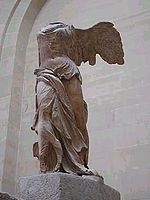


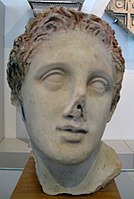




![Diane of Gabies [fr] dressing with a diplax](https://upload.wikimedia.org/wikipedia/commons/thumb/b/be/Diana_of_Gabies.jpg/85px-Diana_of_Gabies.jpg)










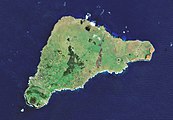






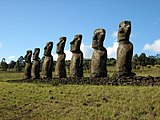
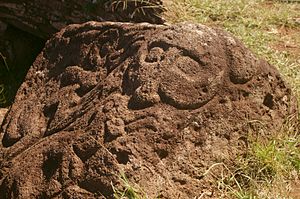
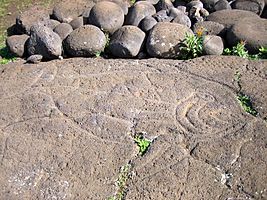
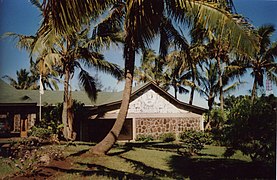
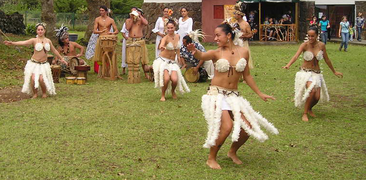



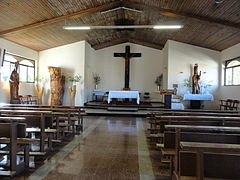









No comments:
Post a Comment